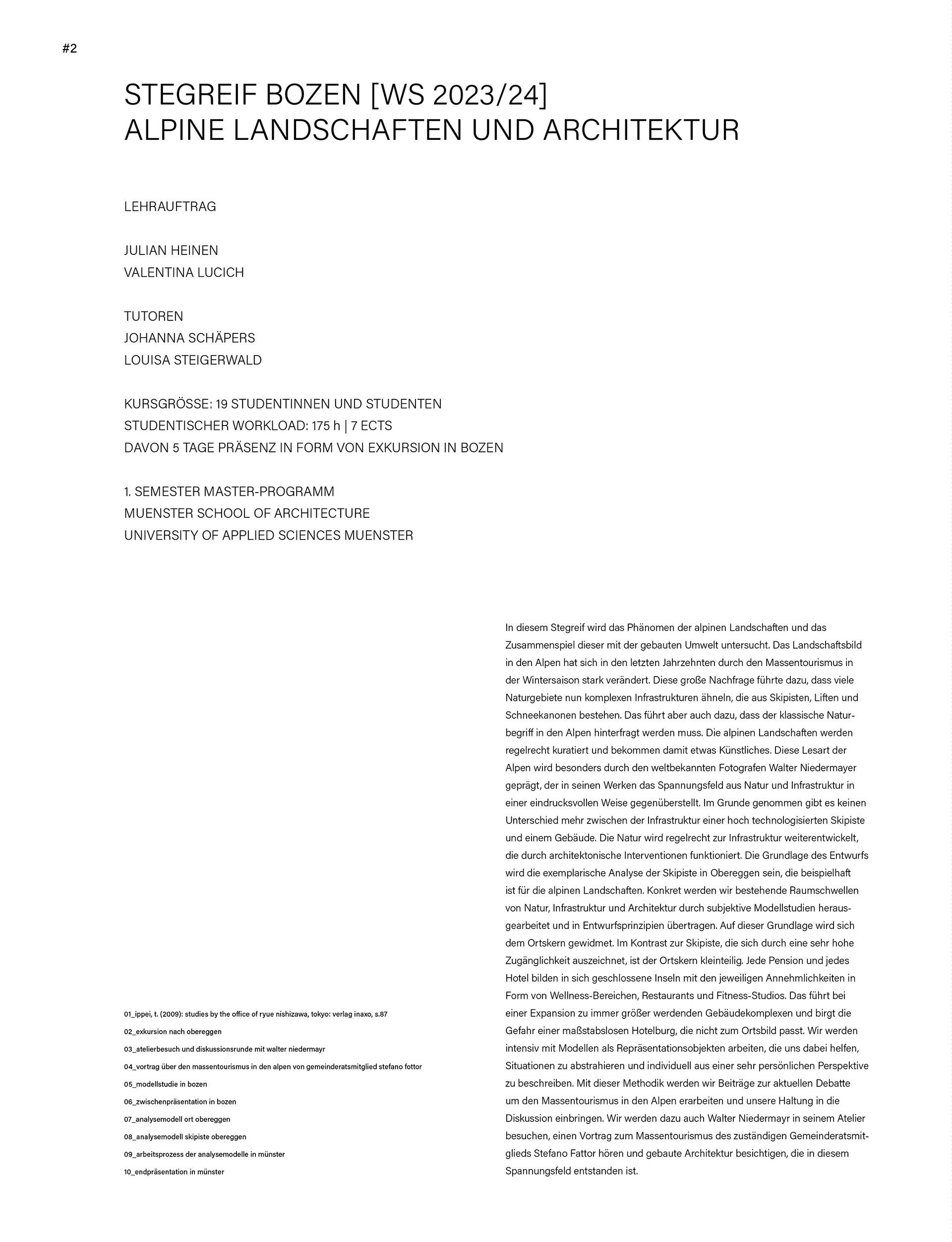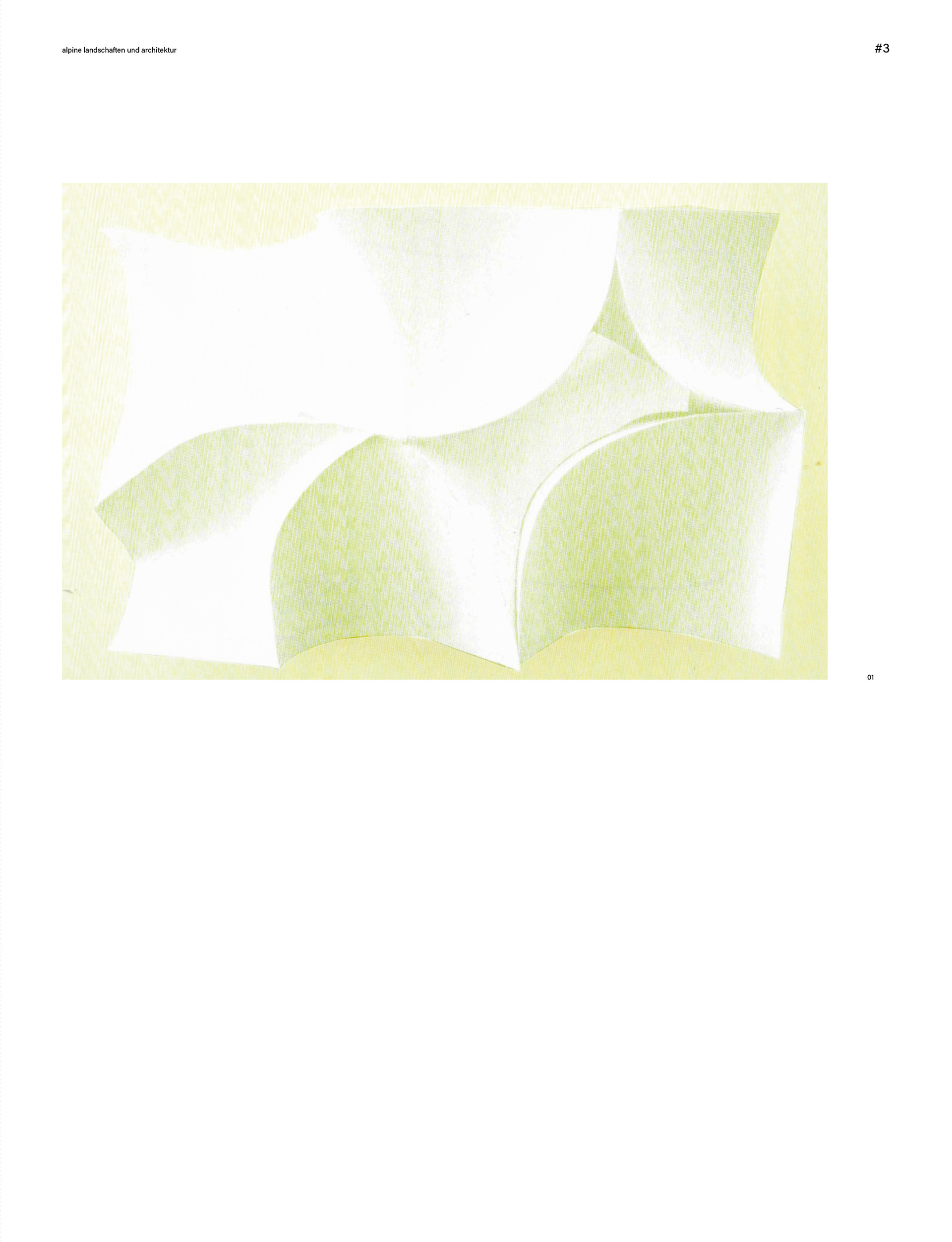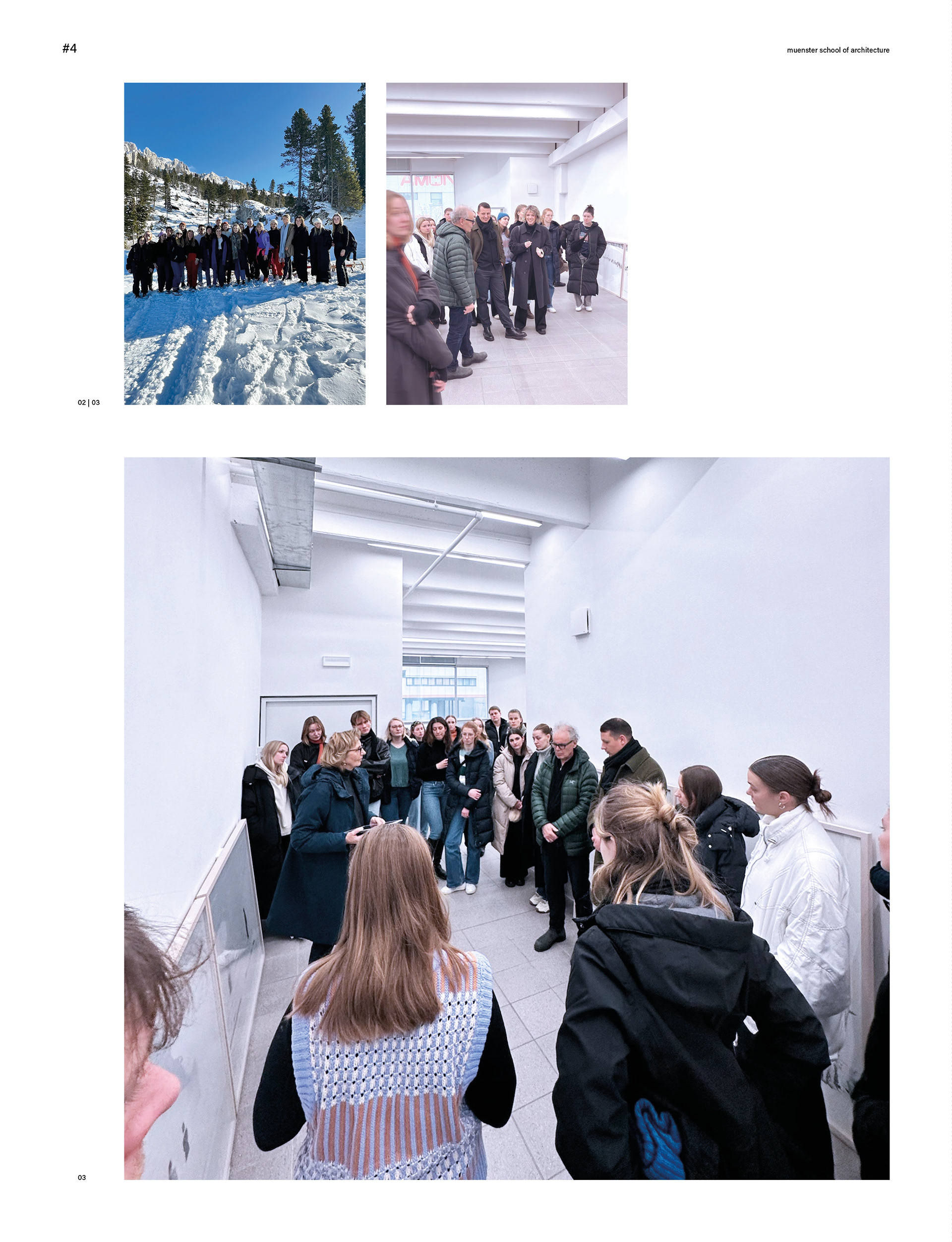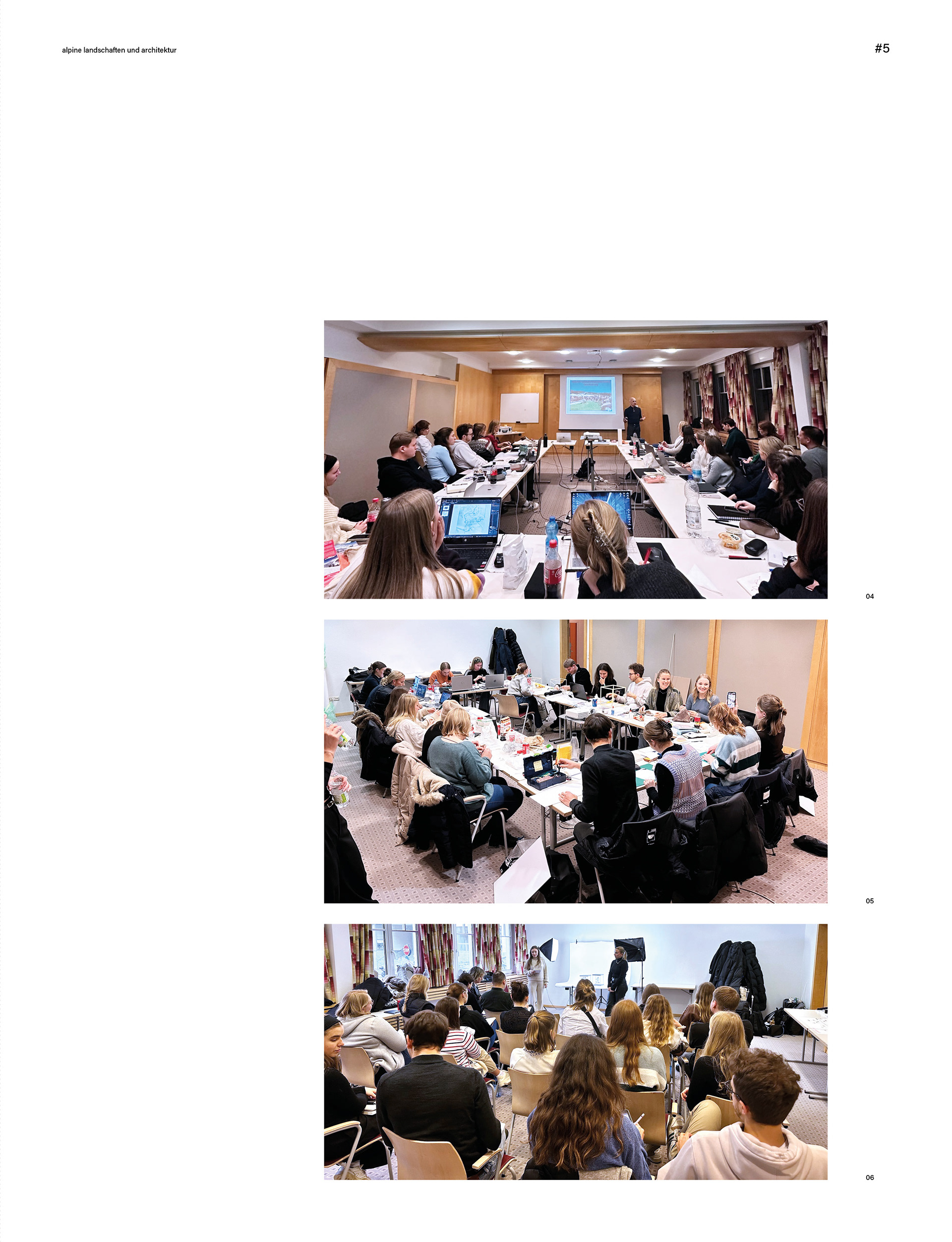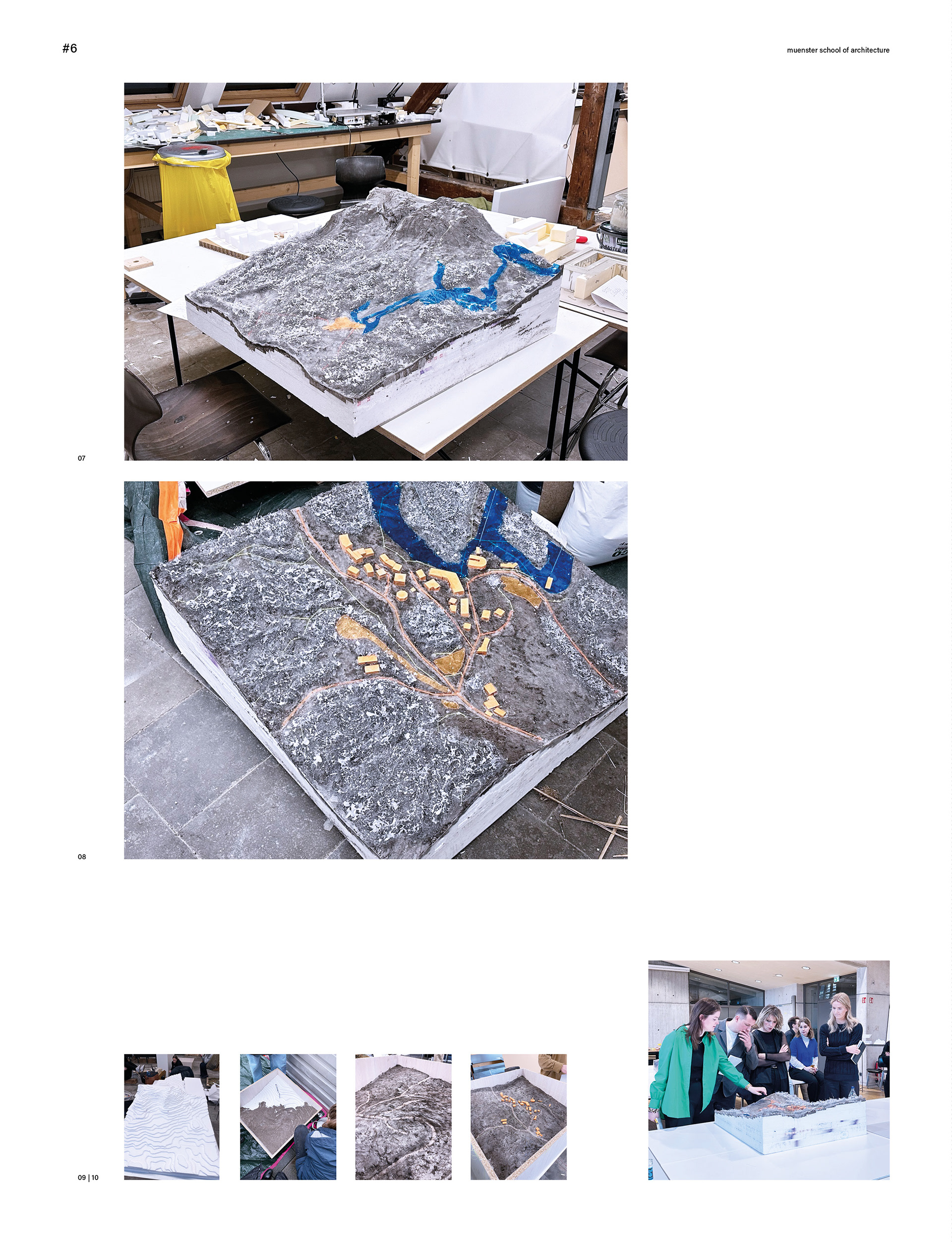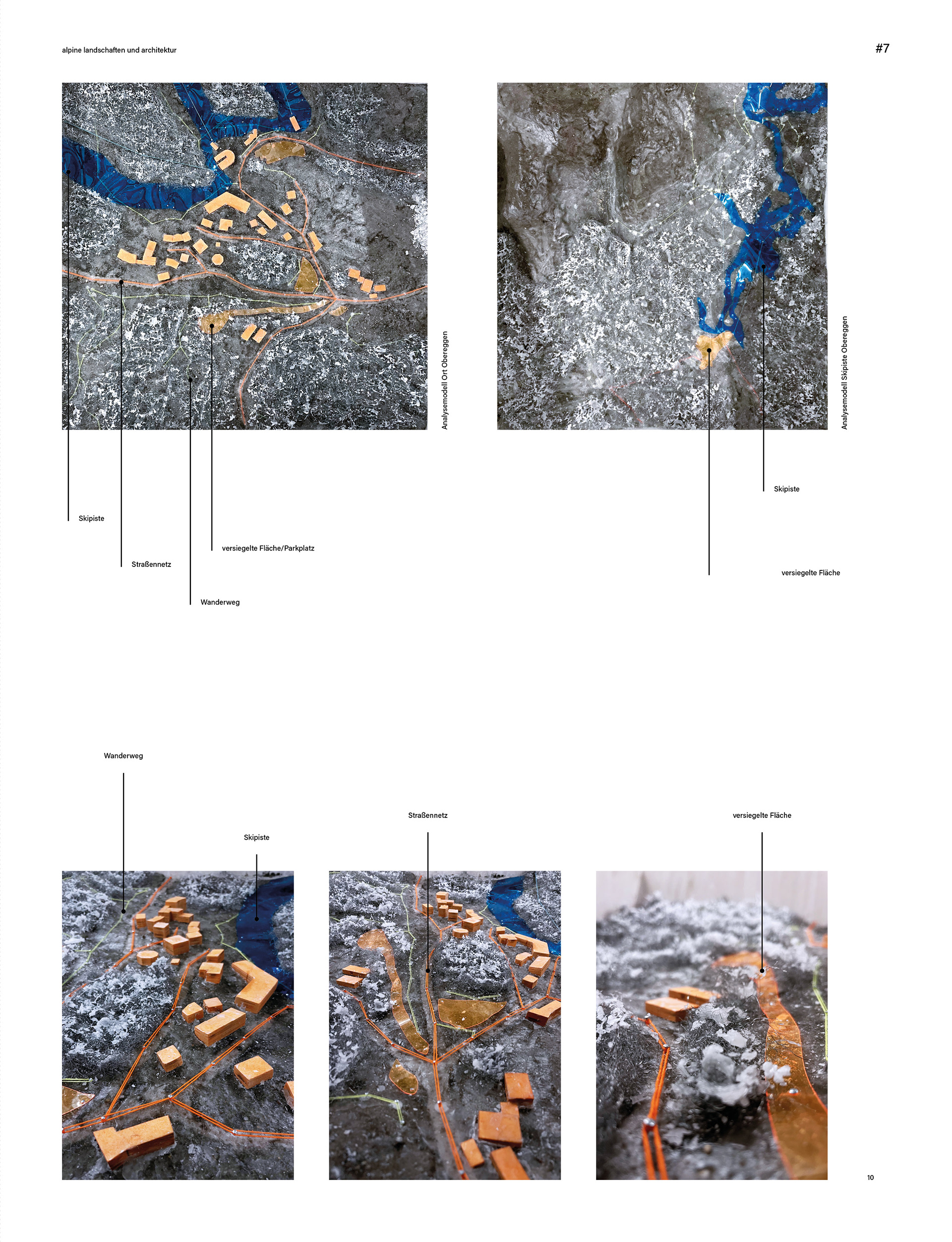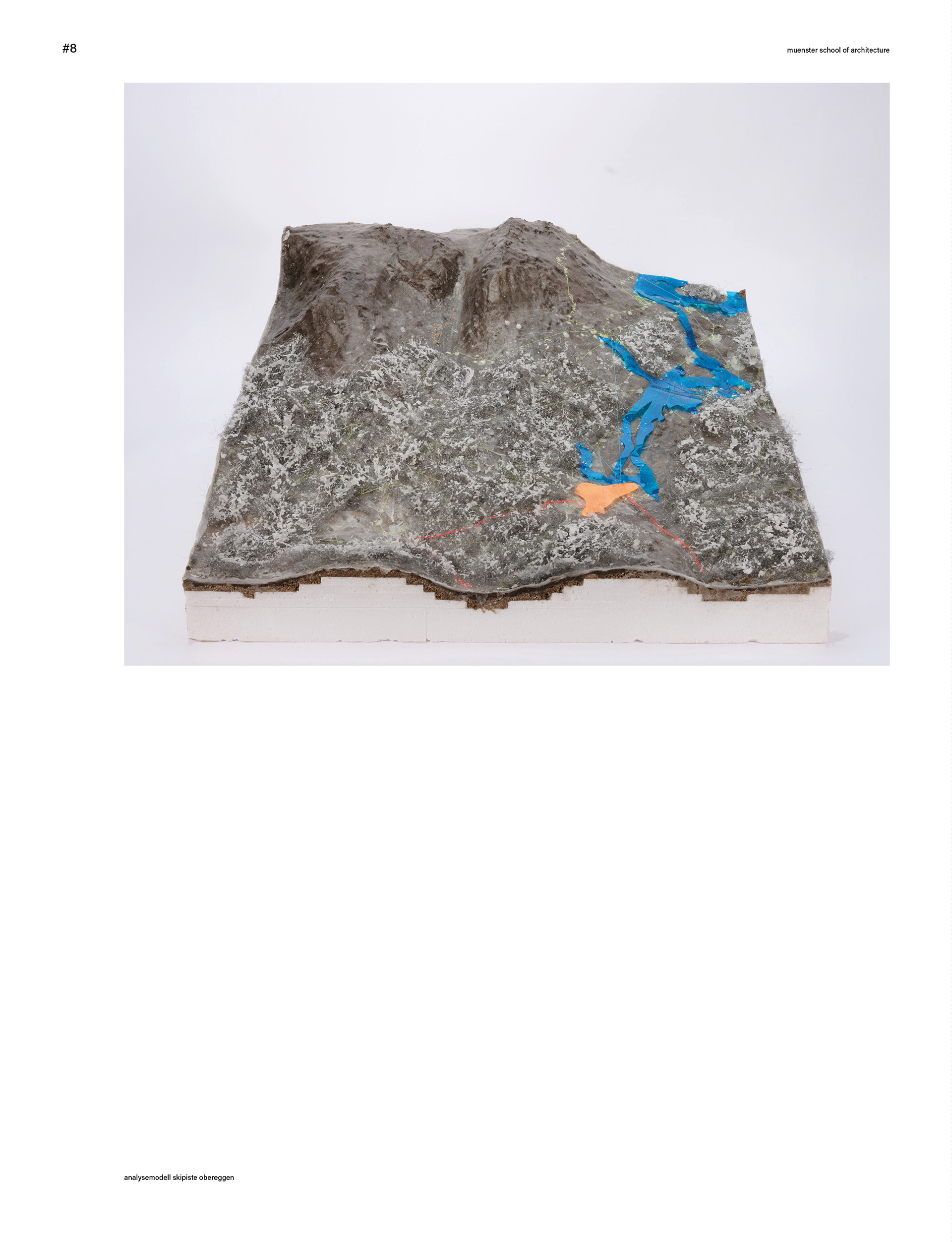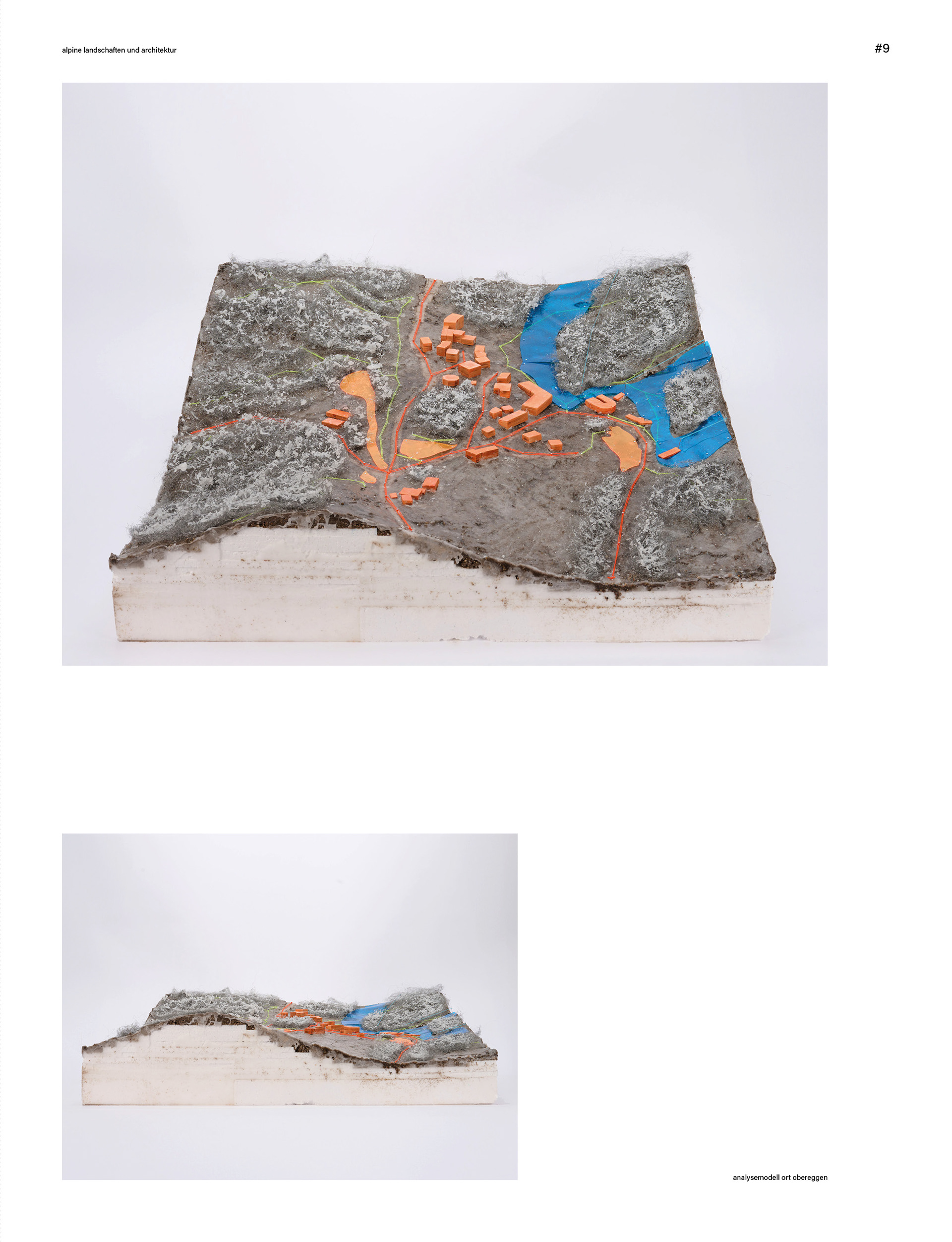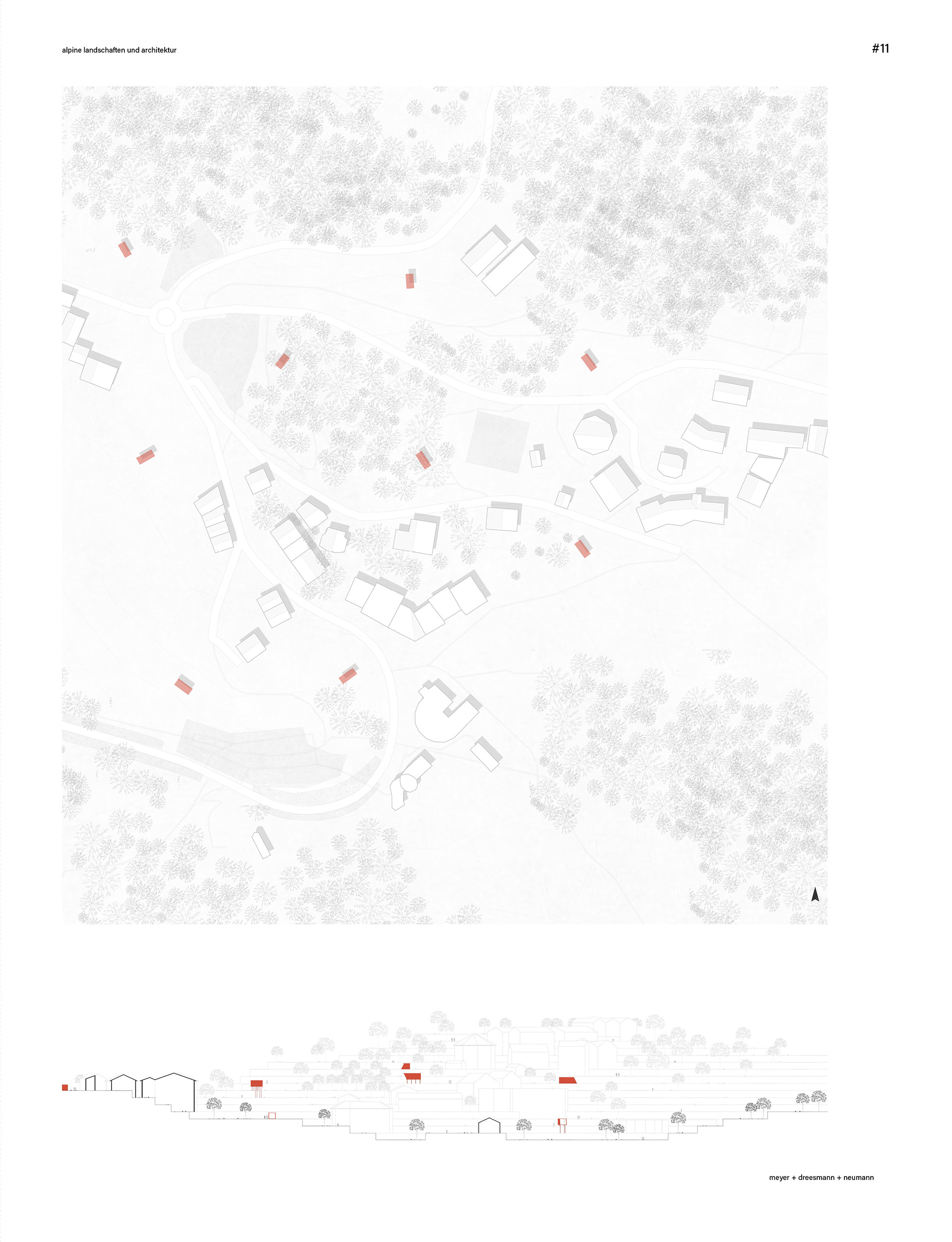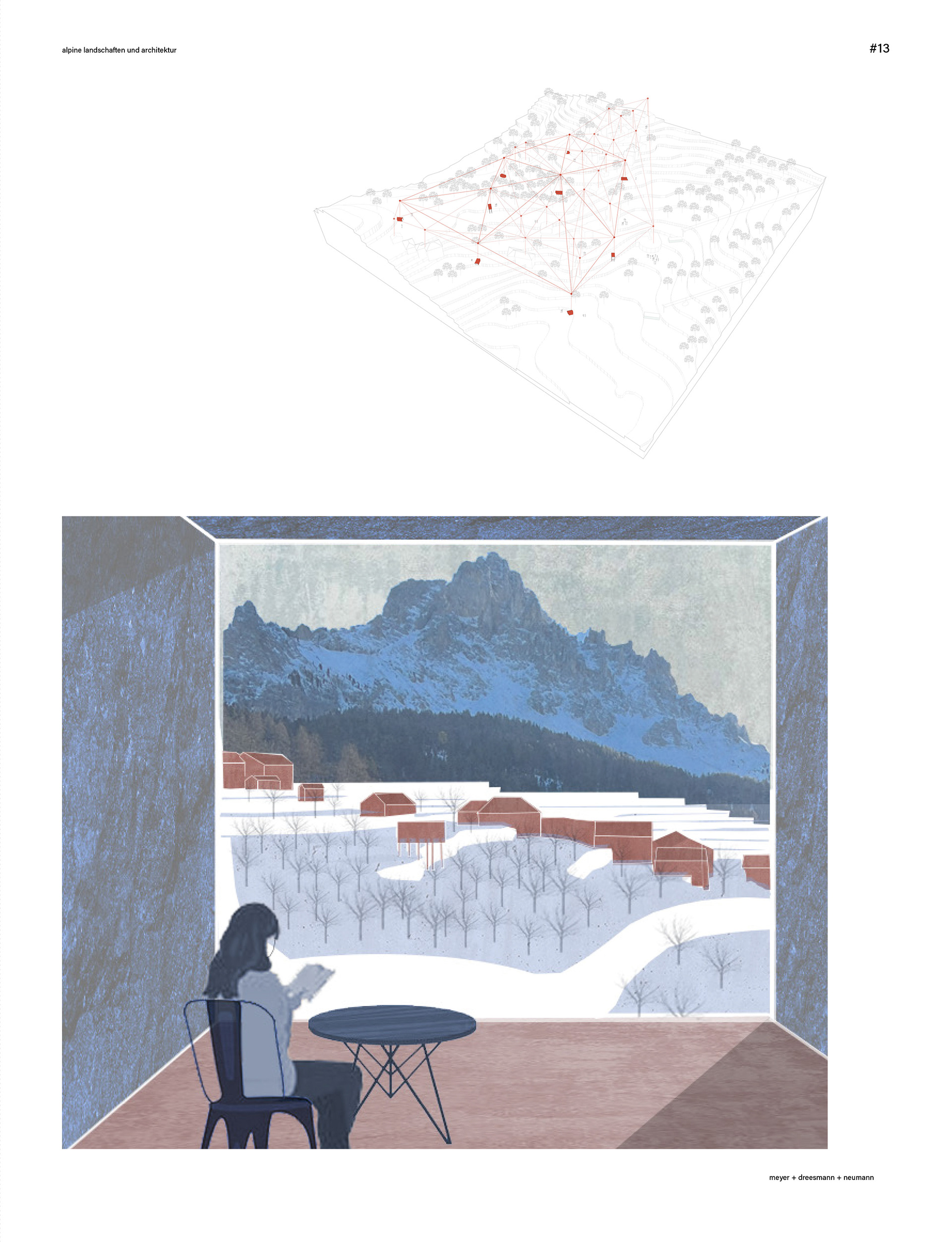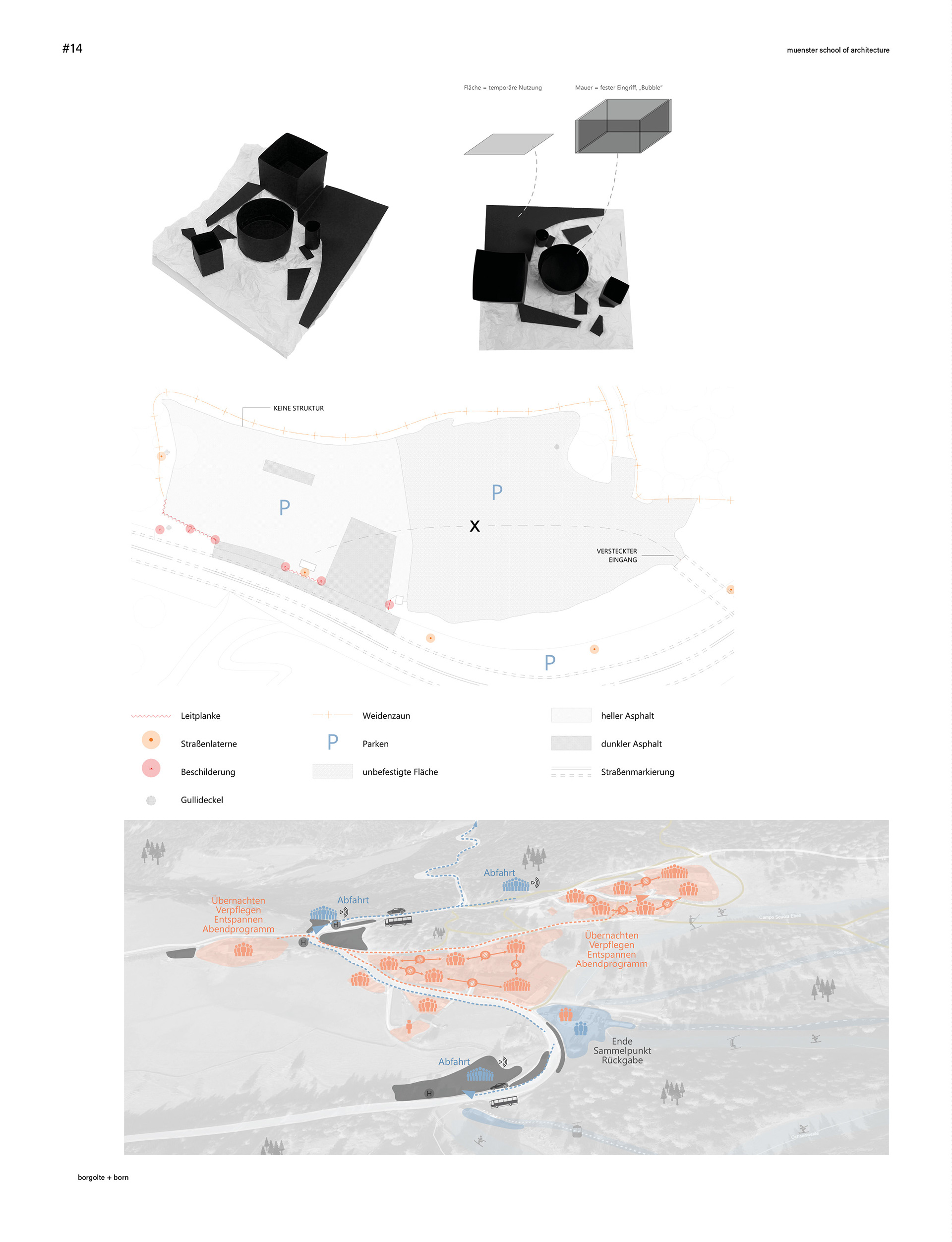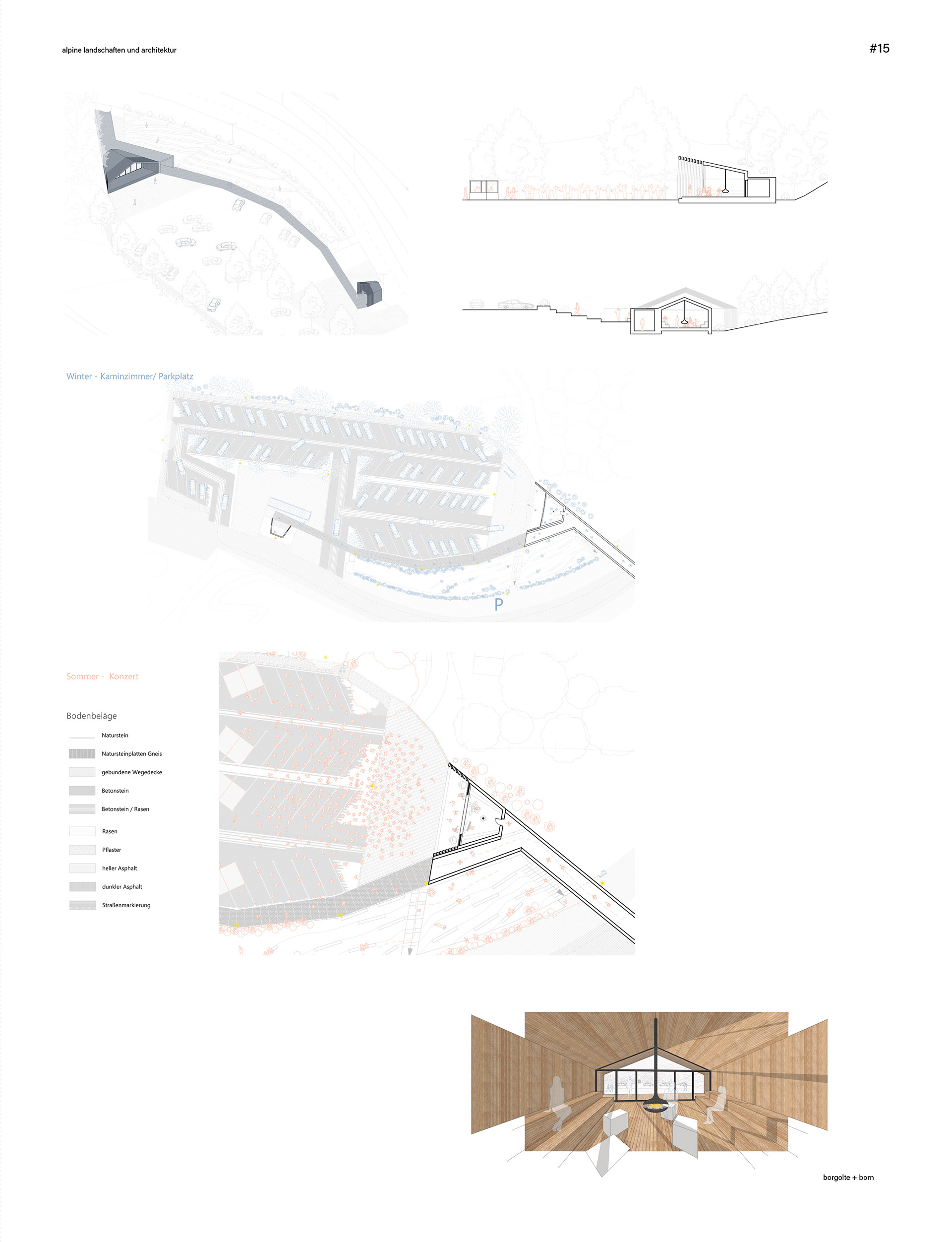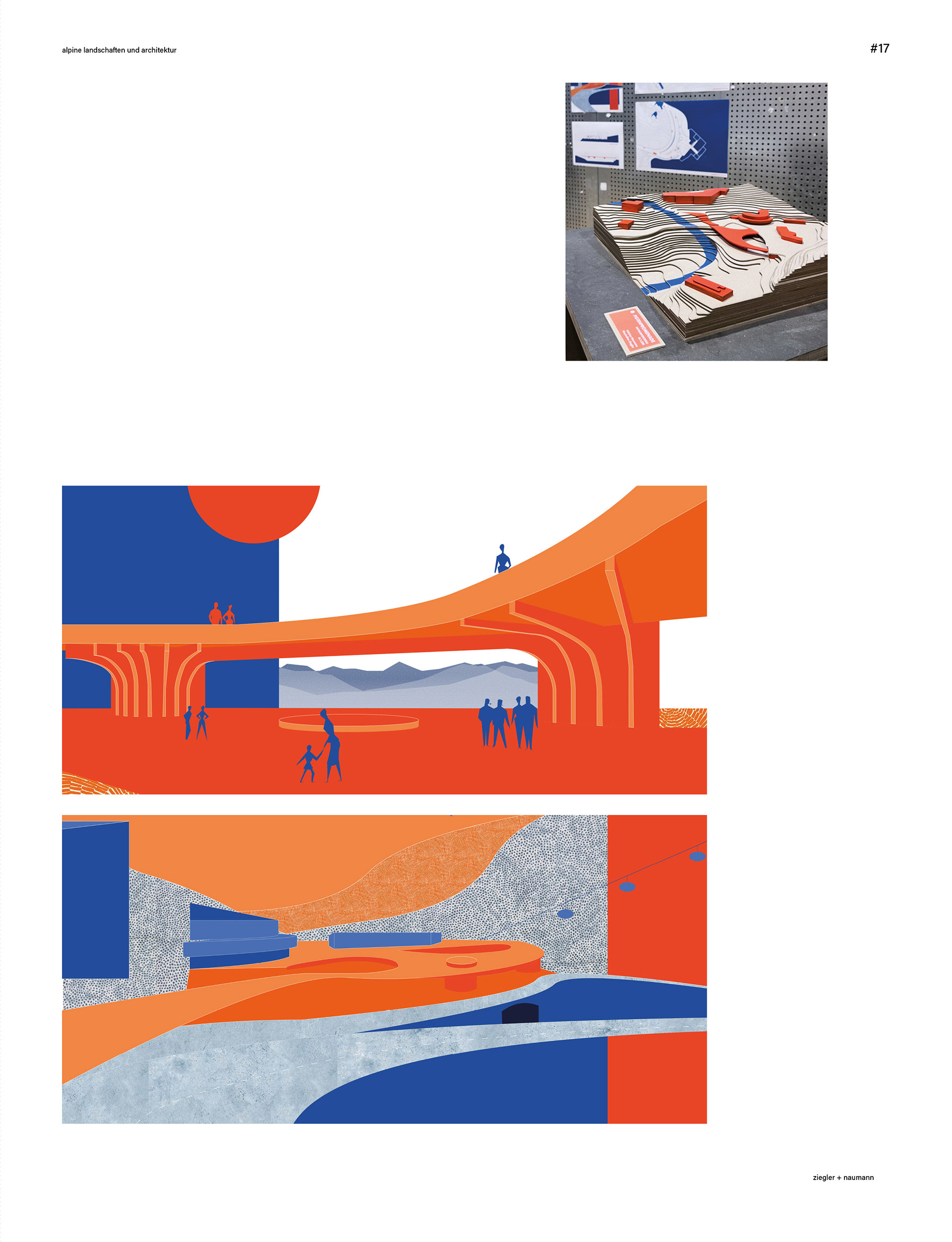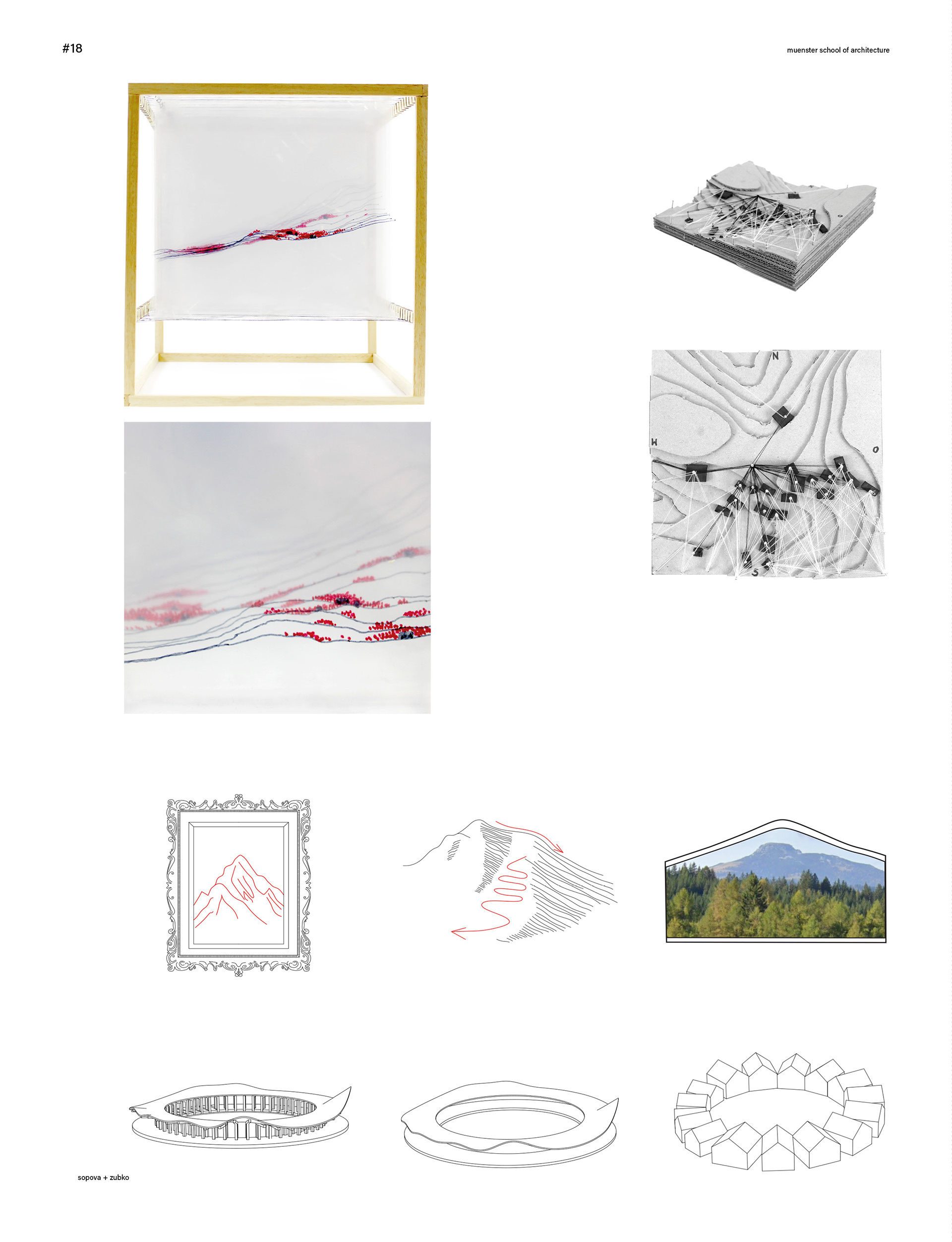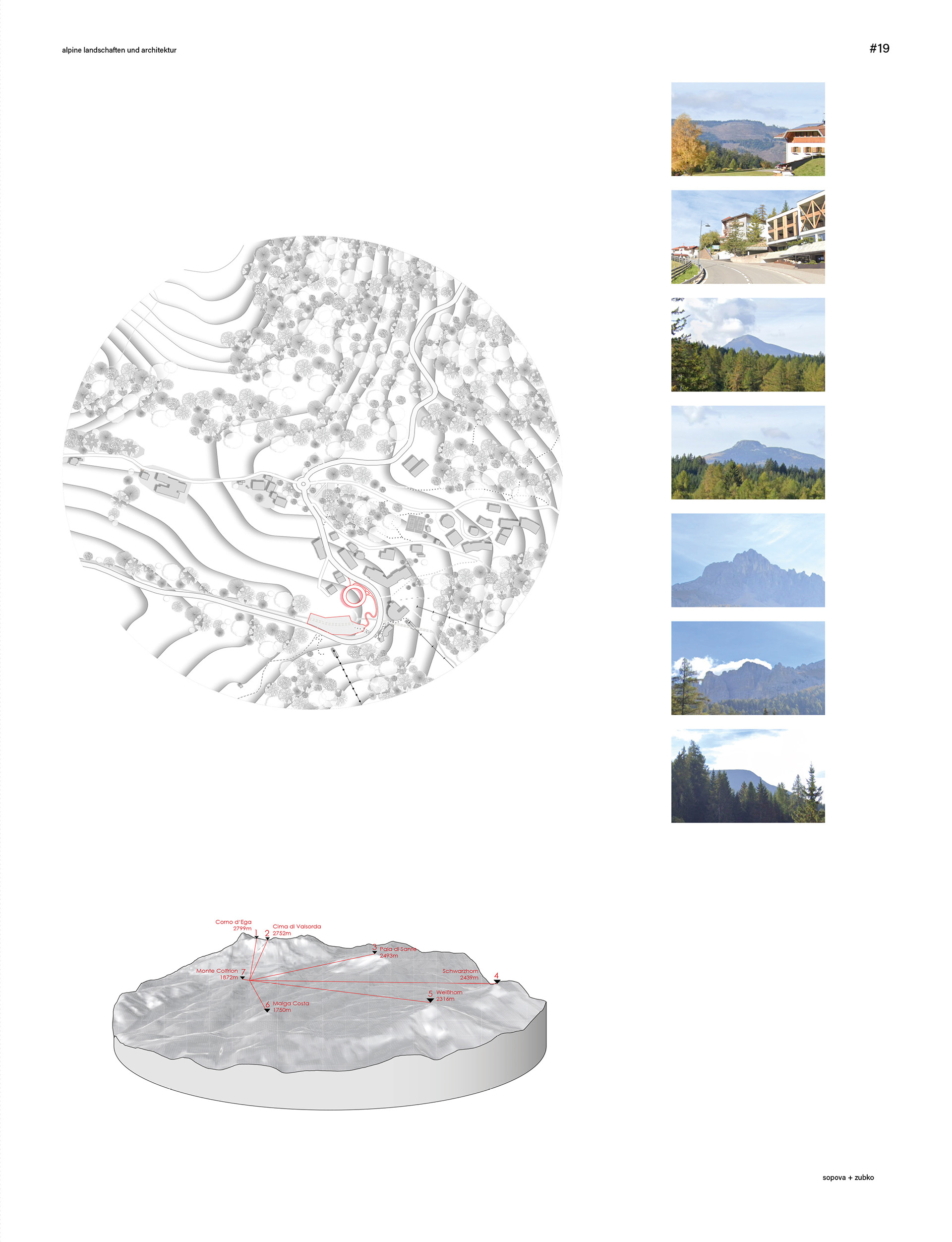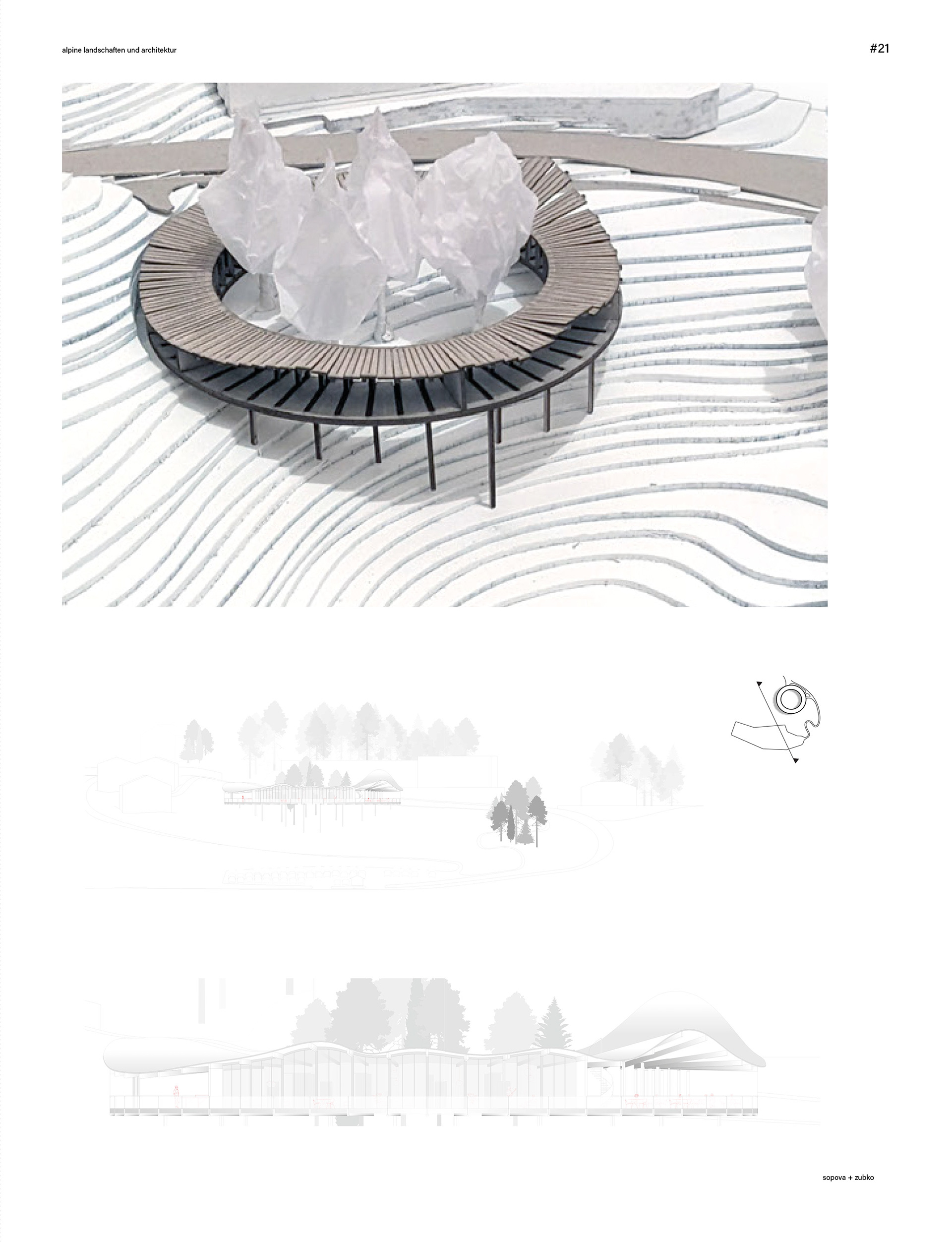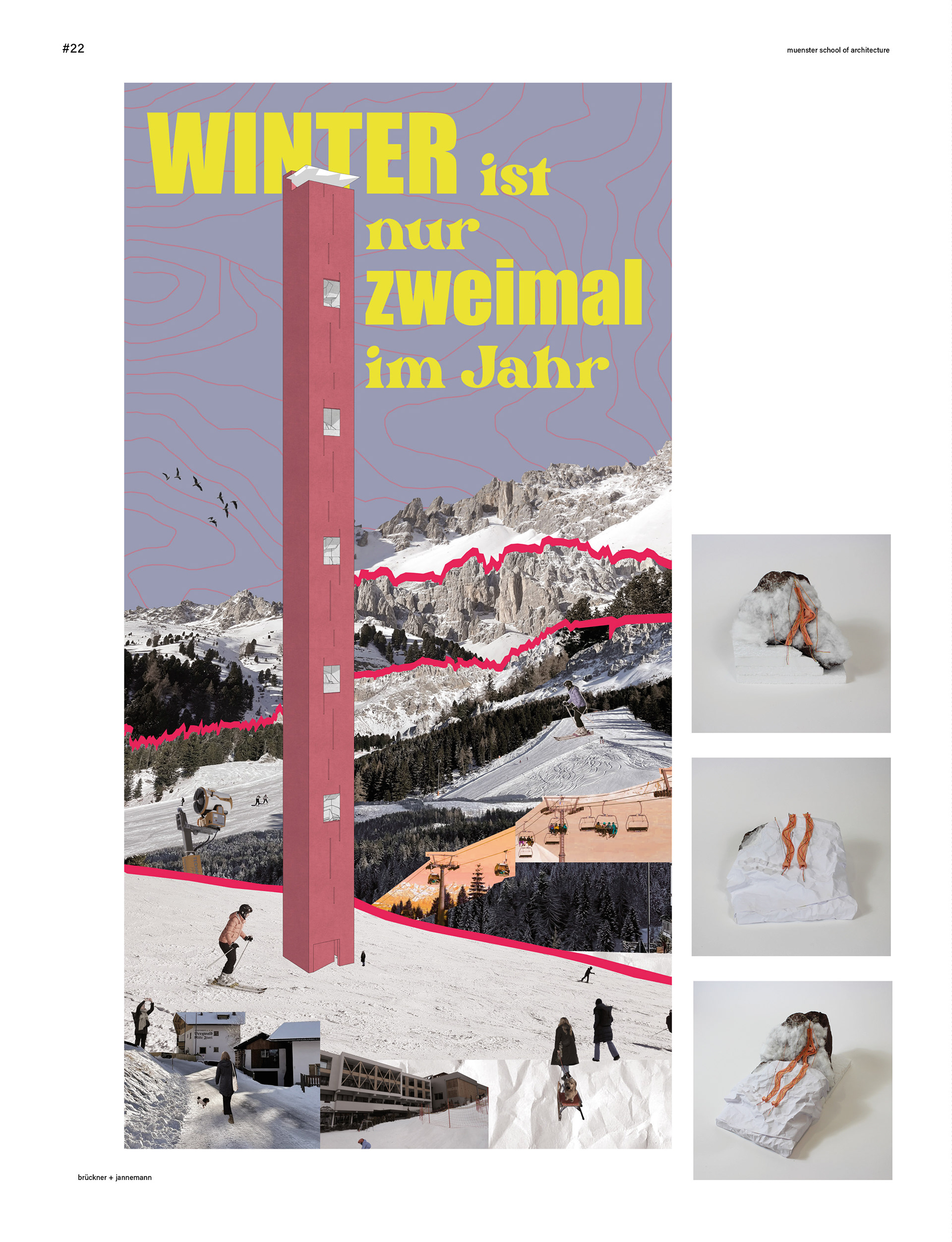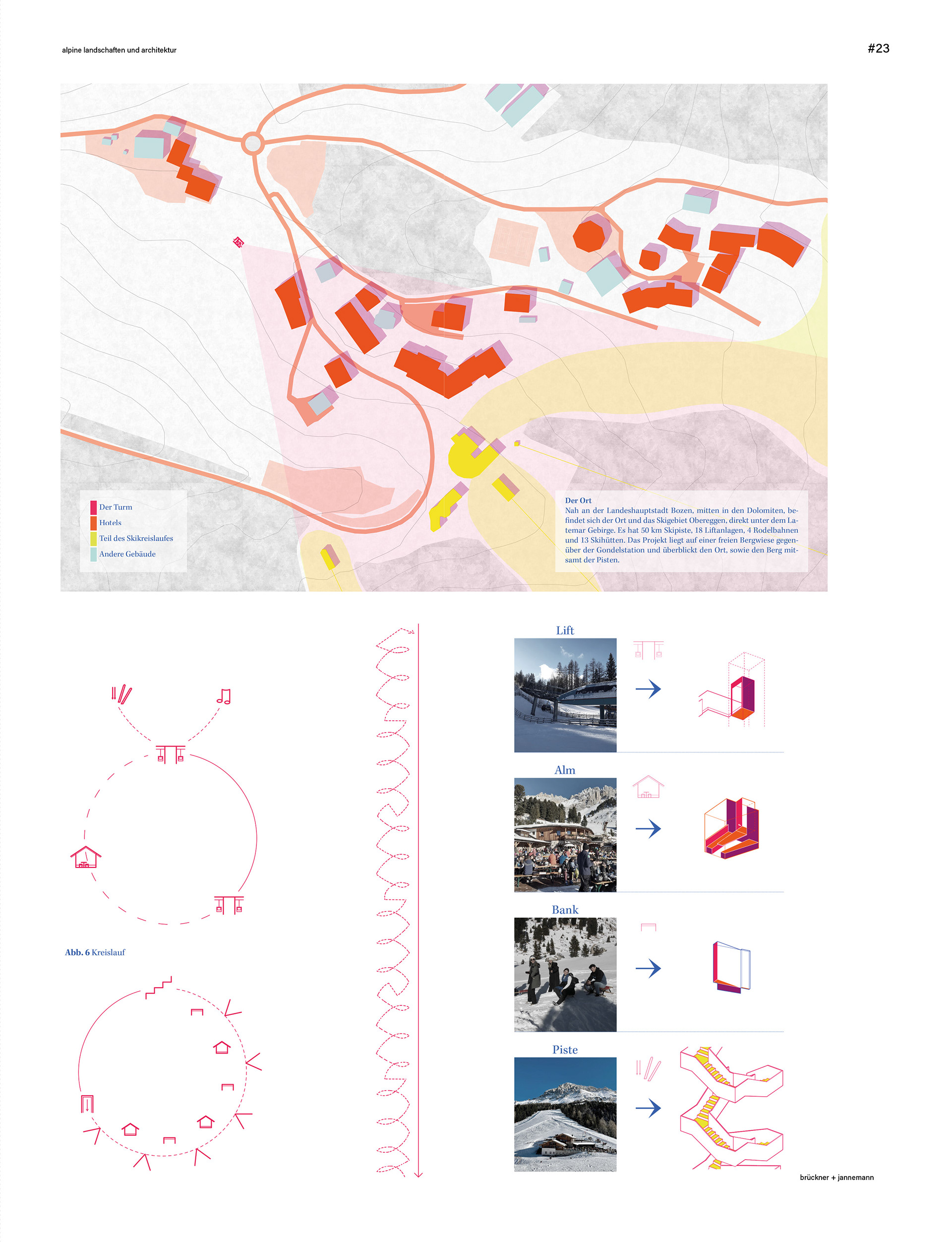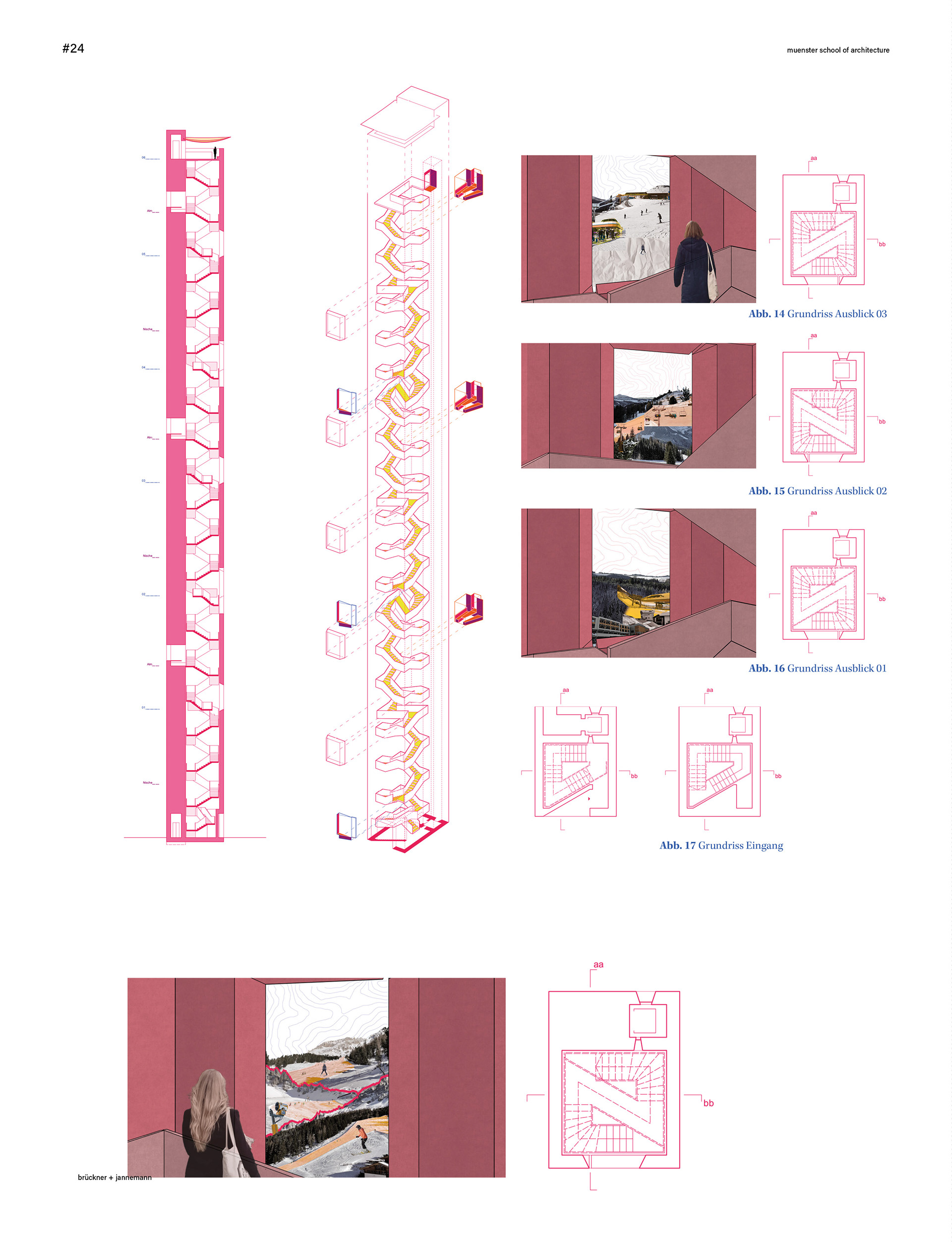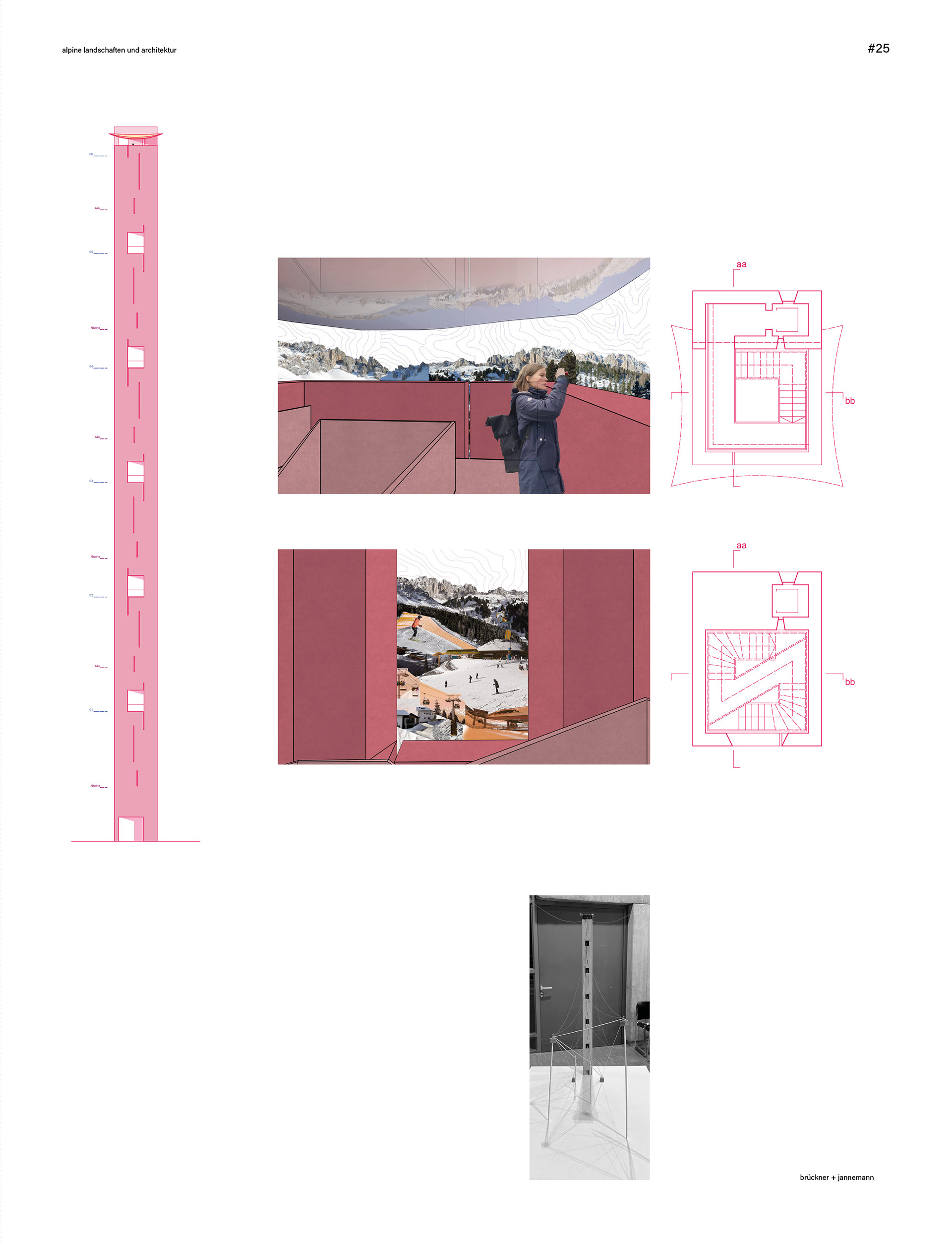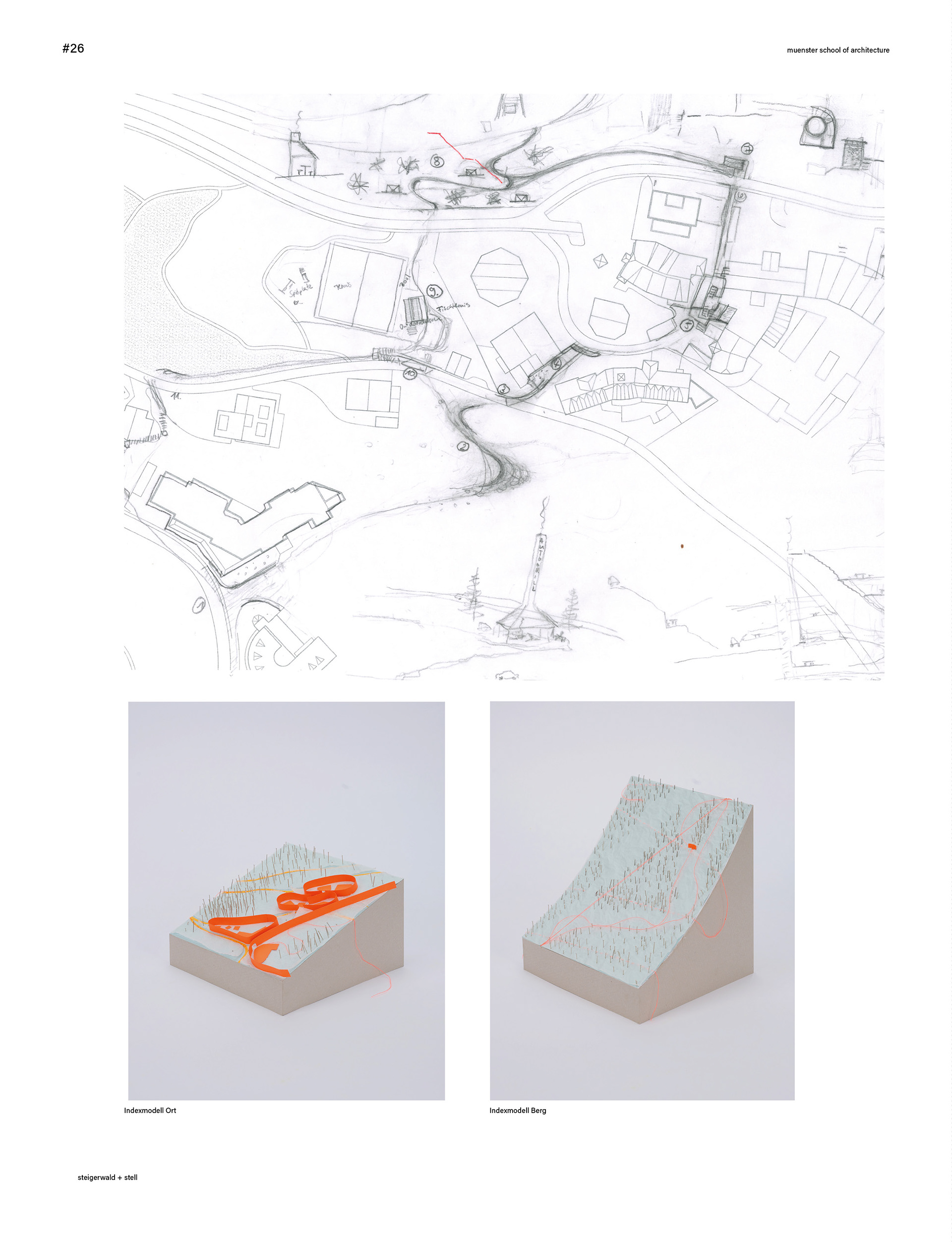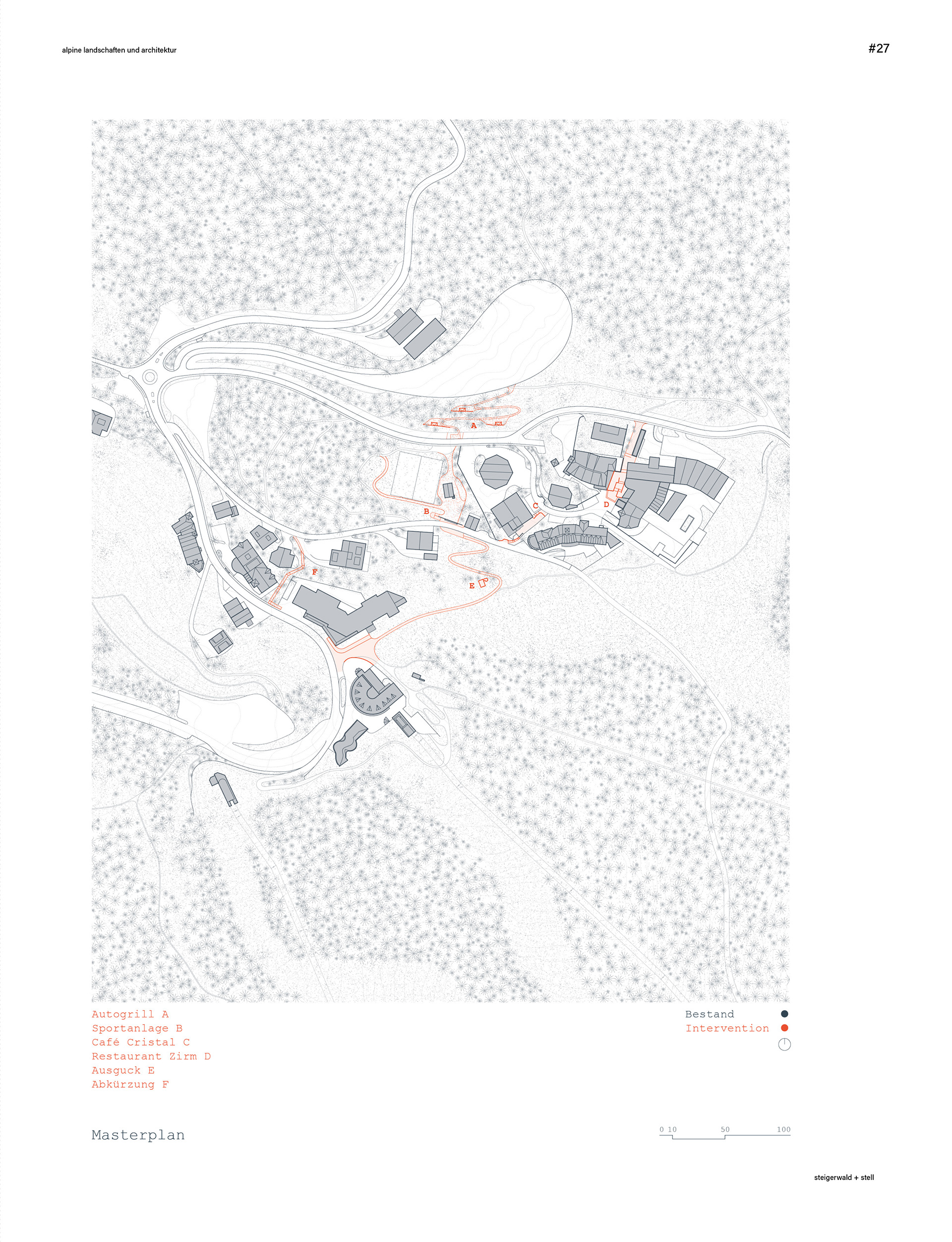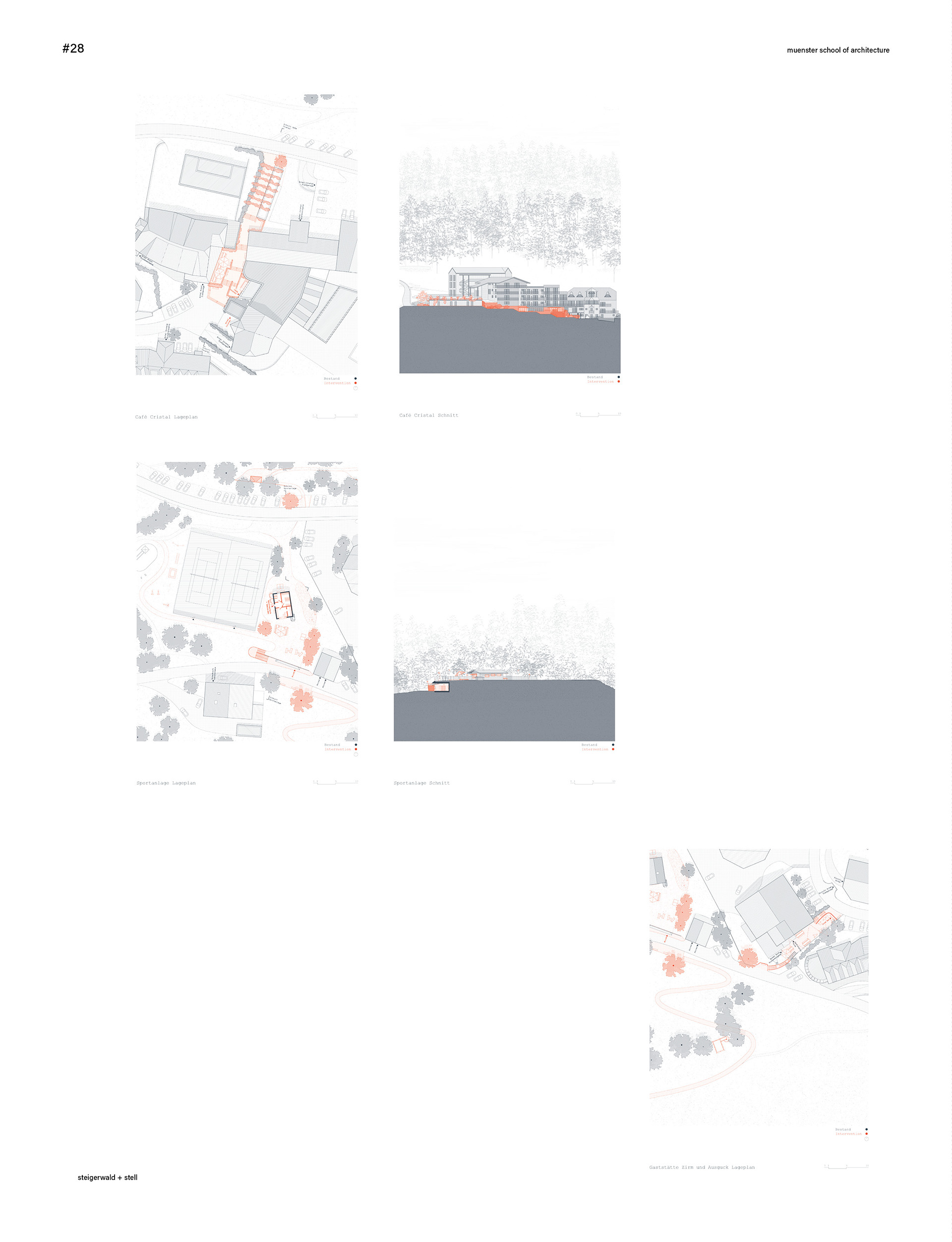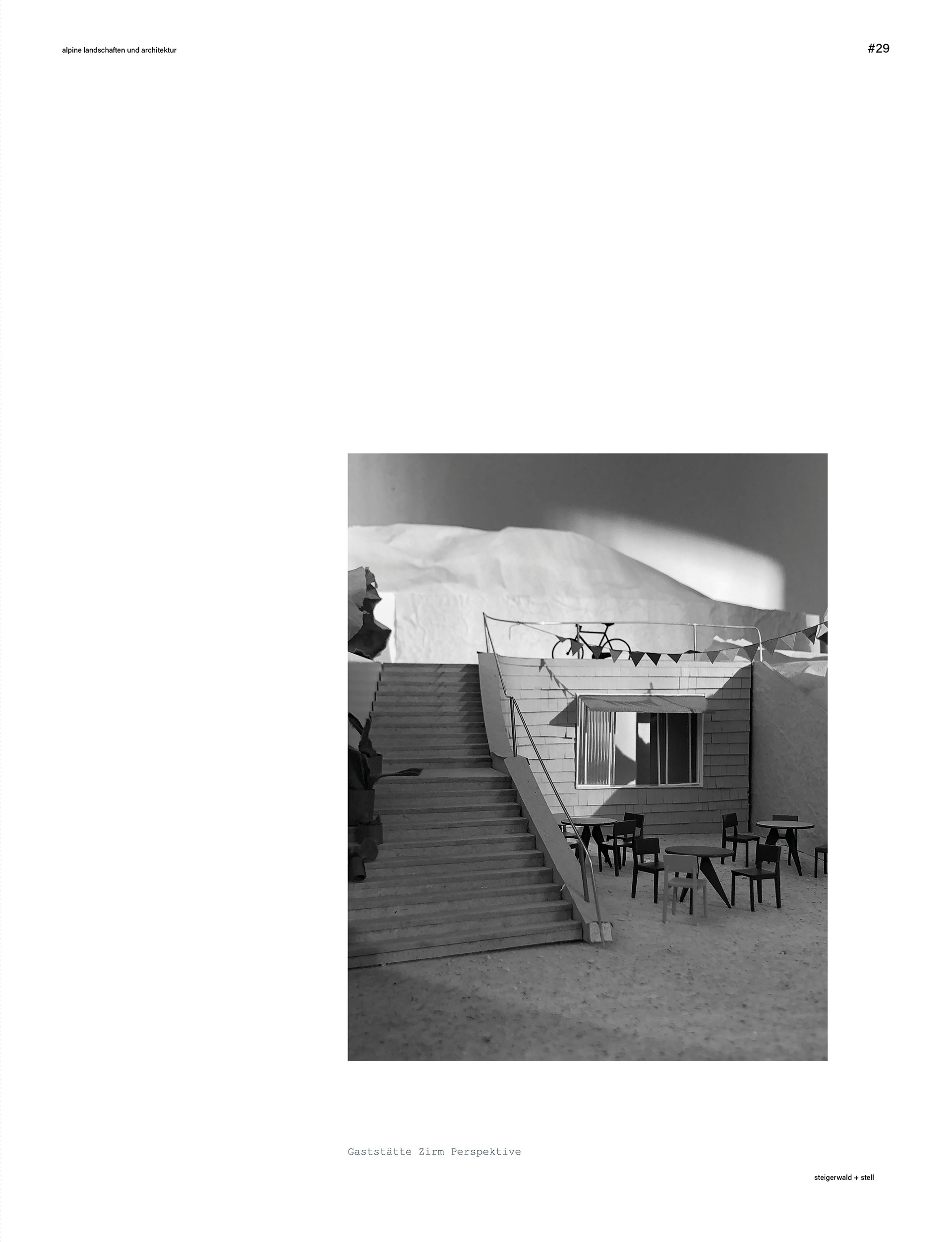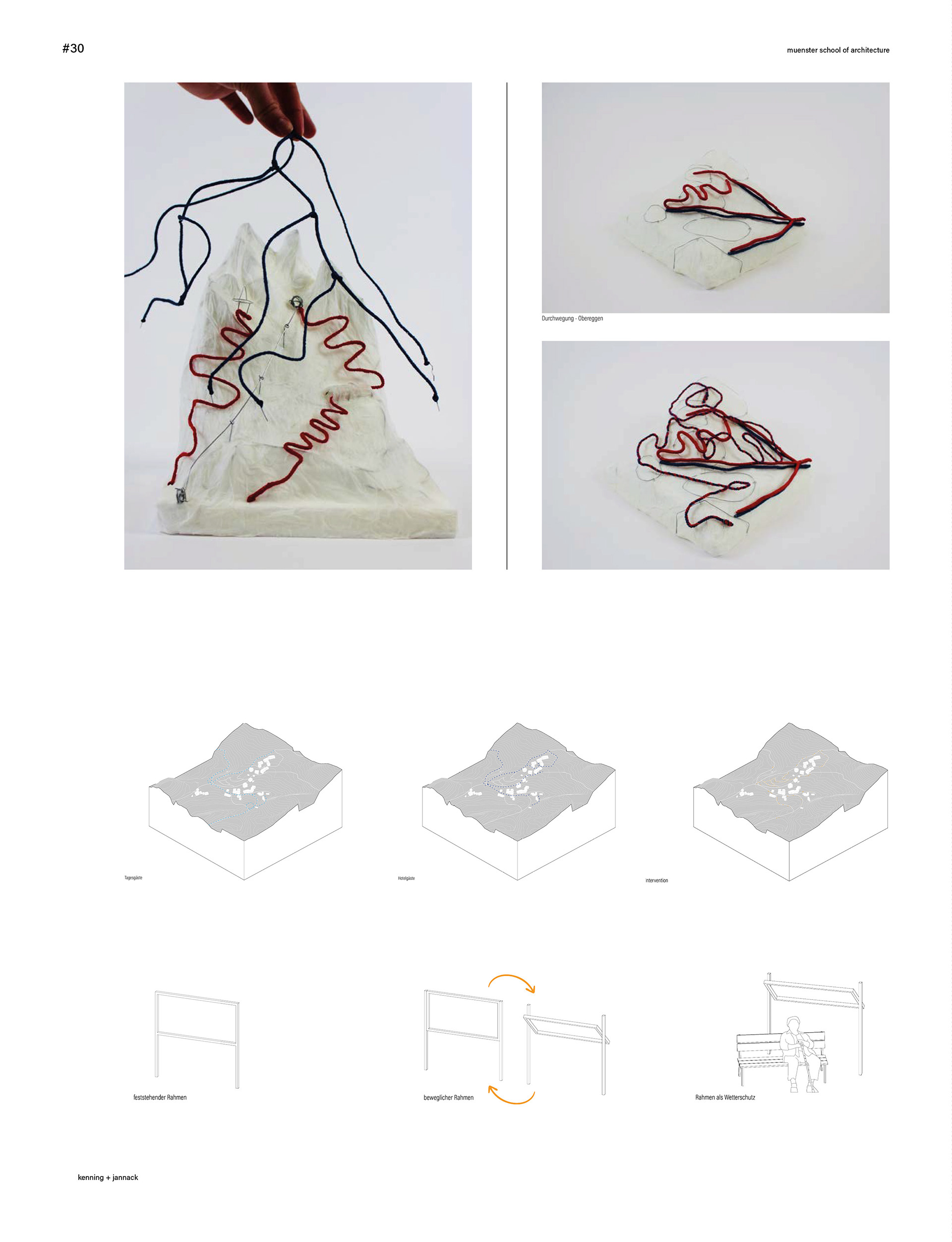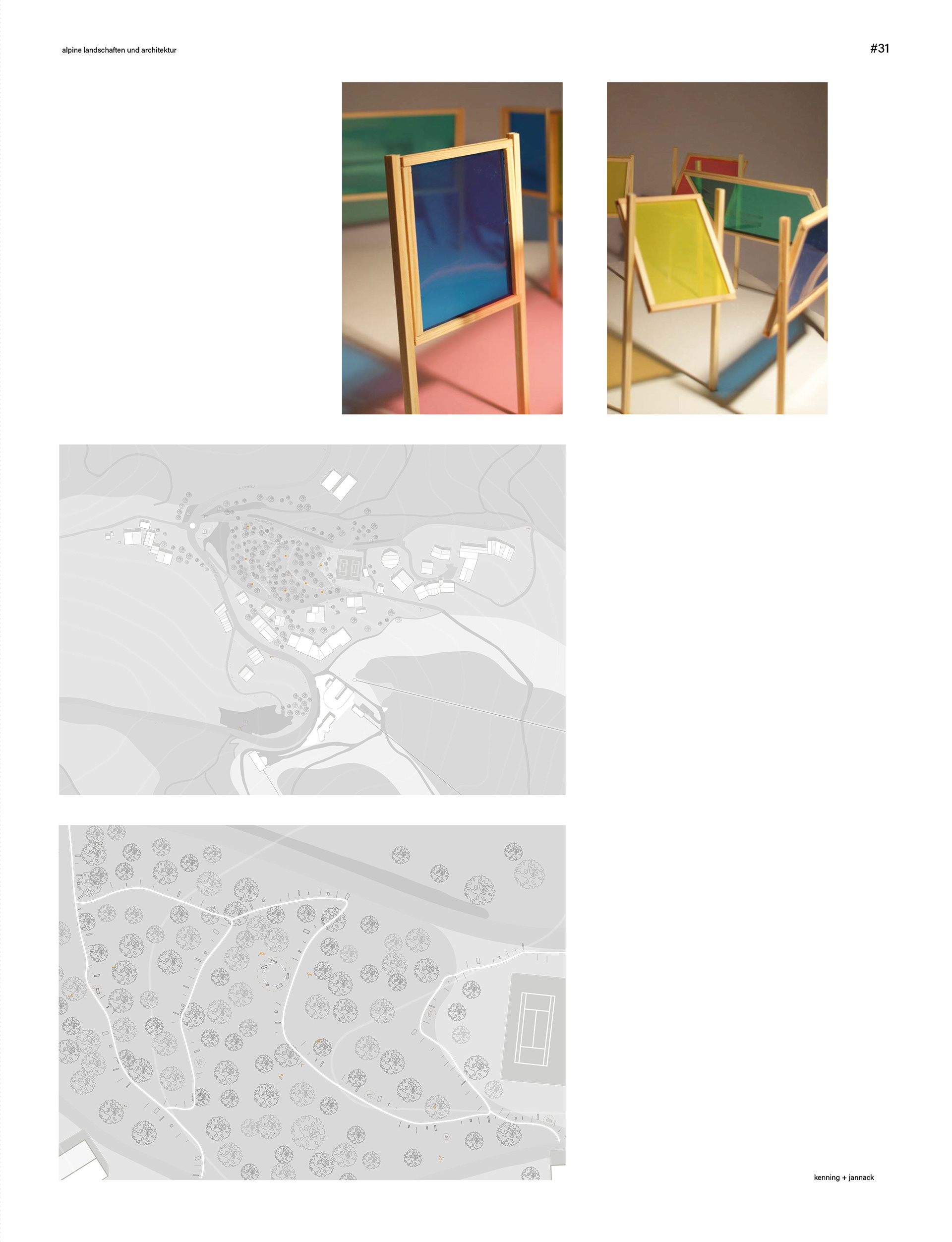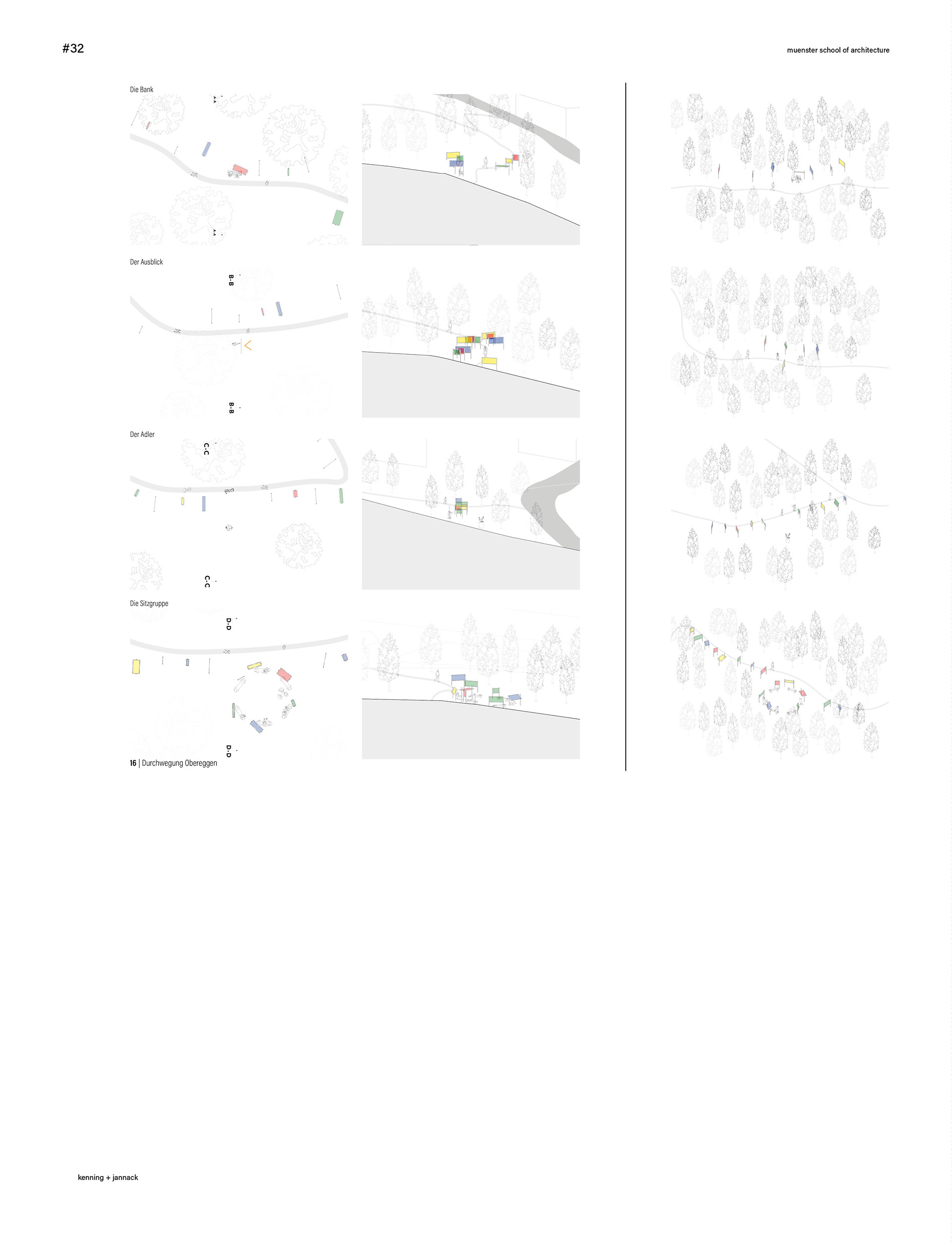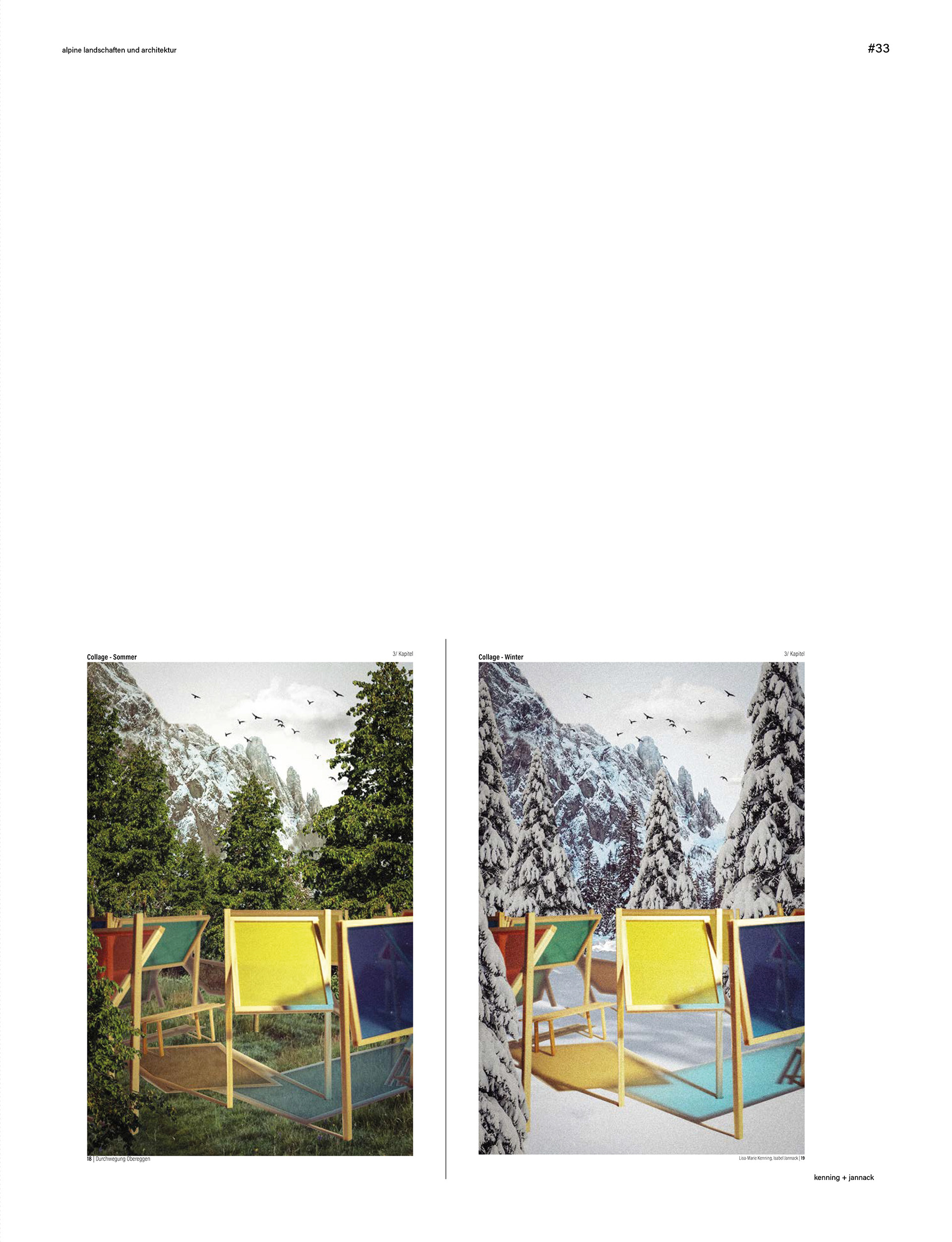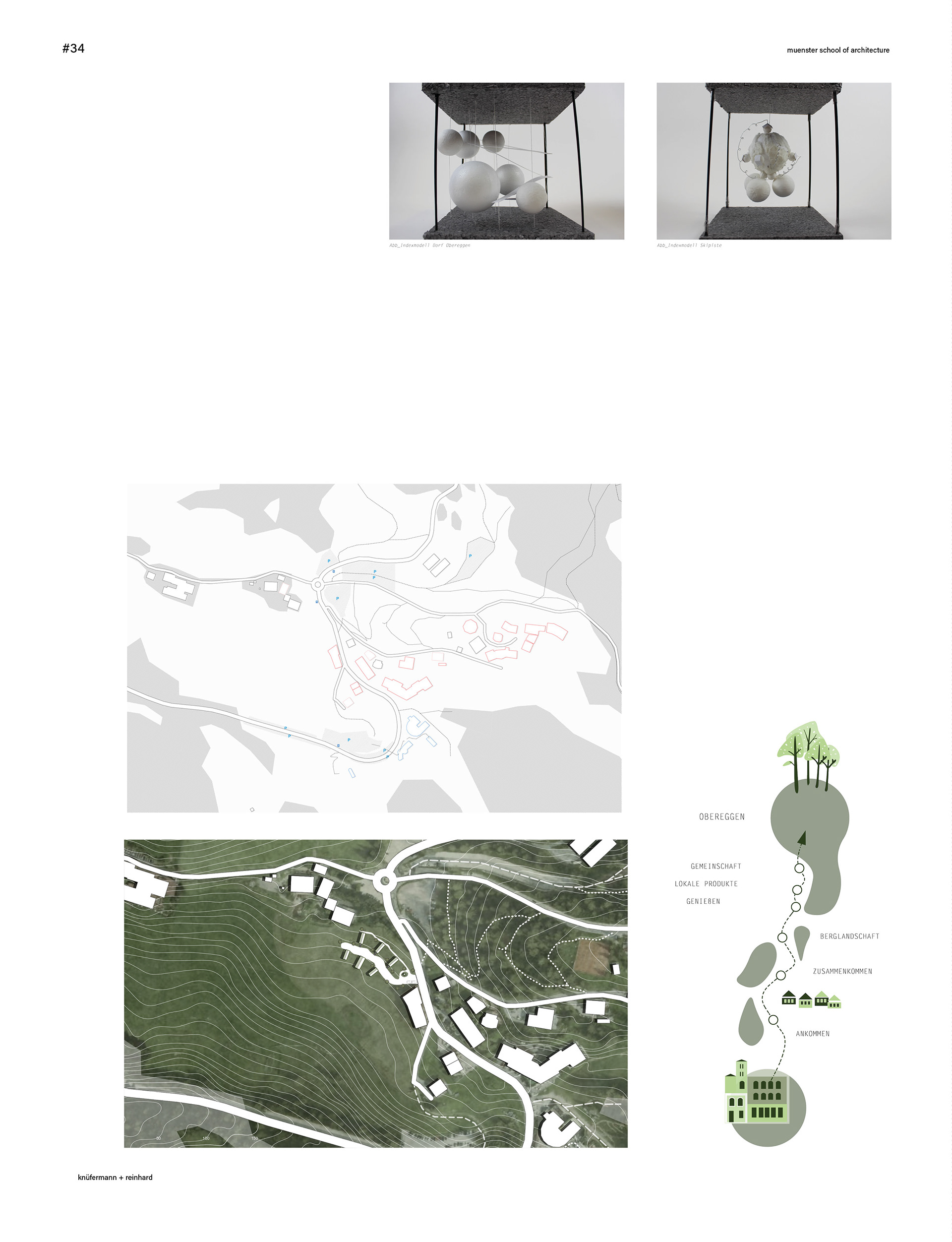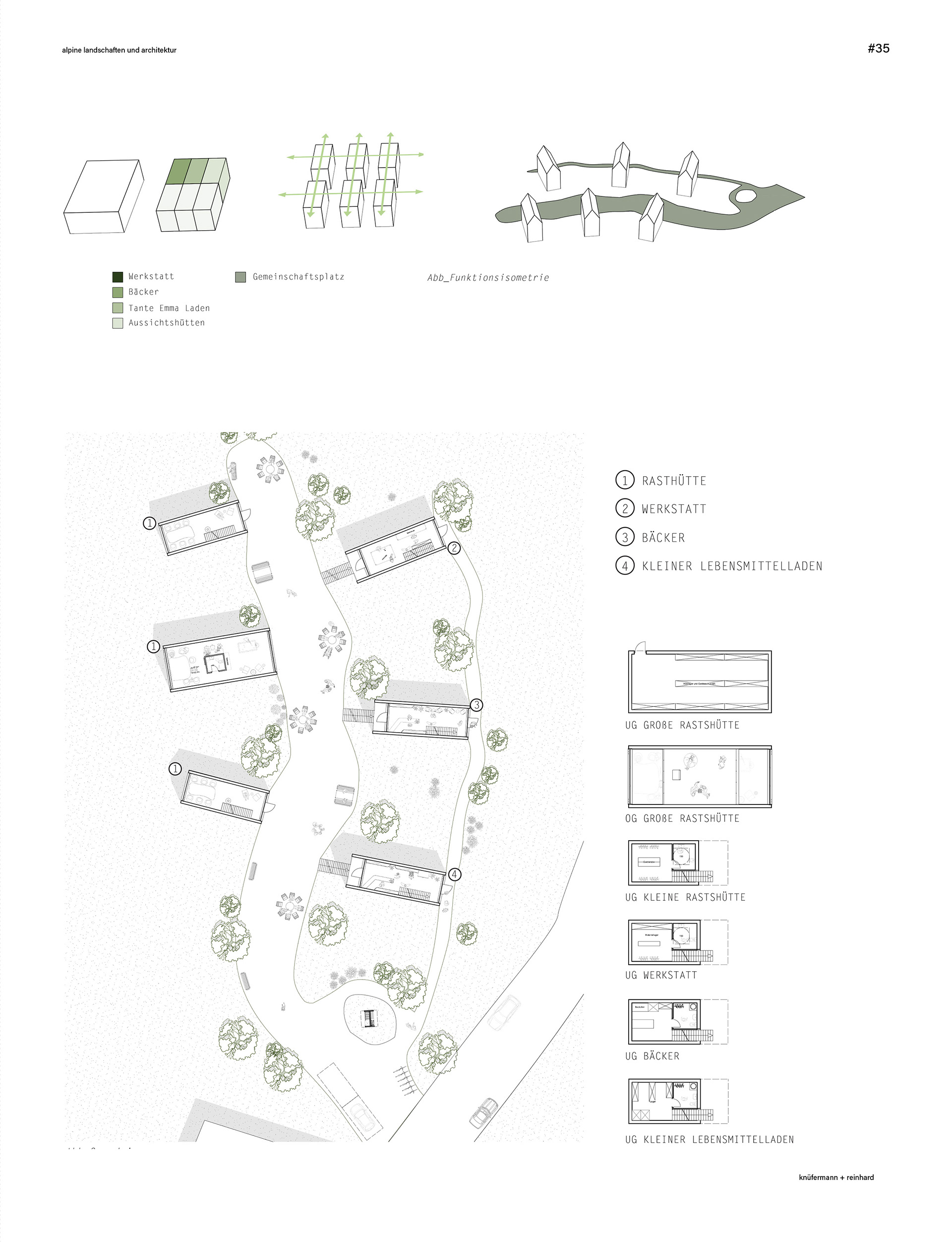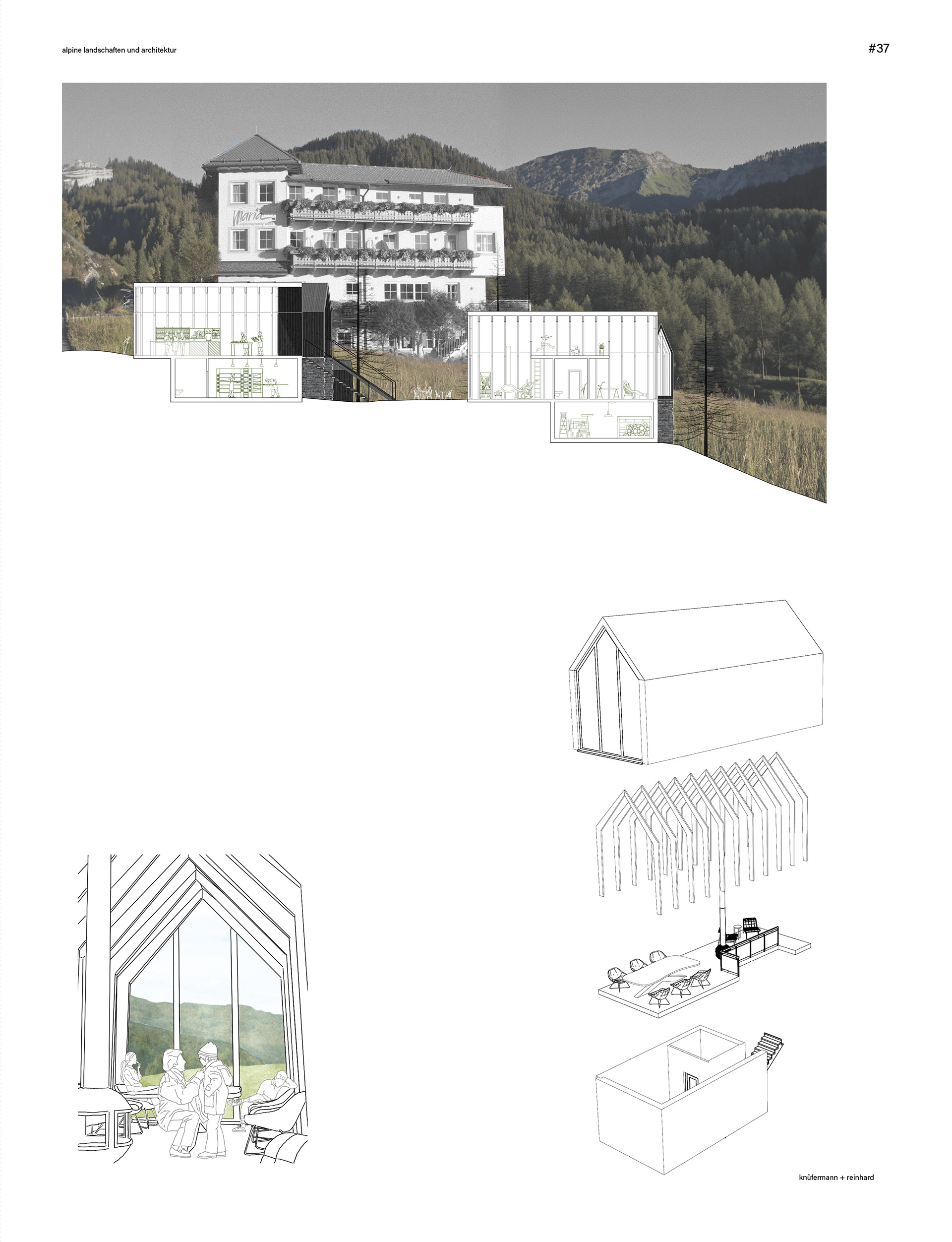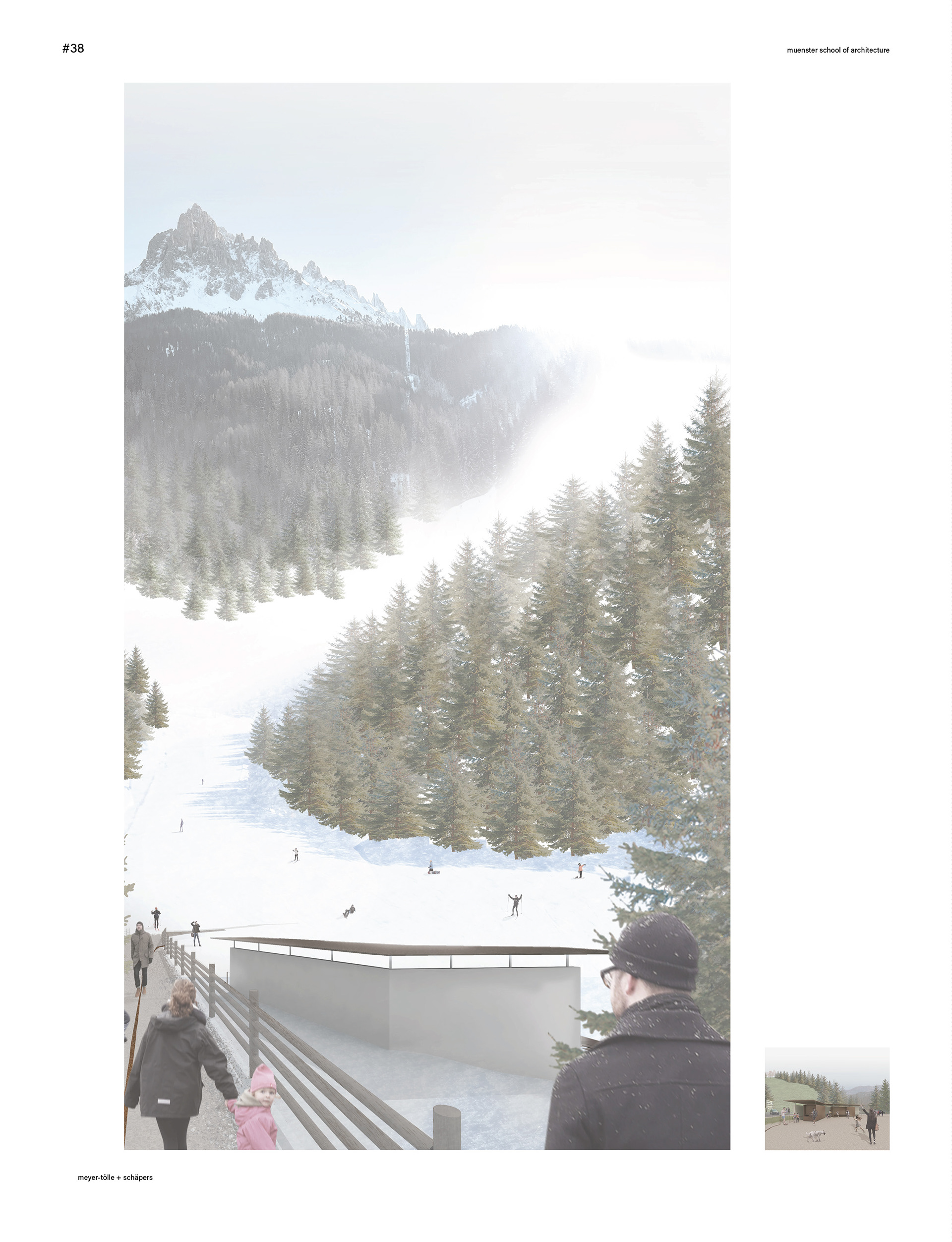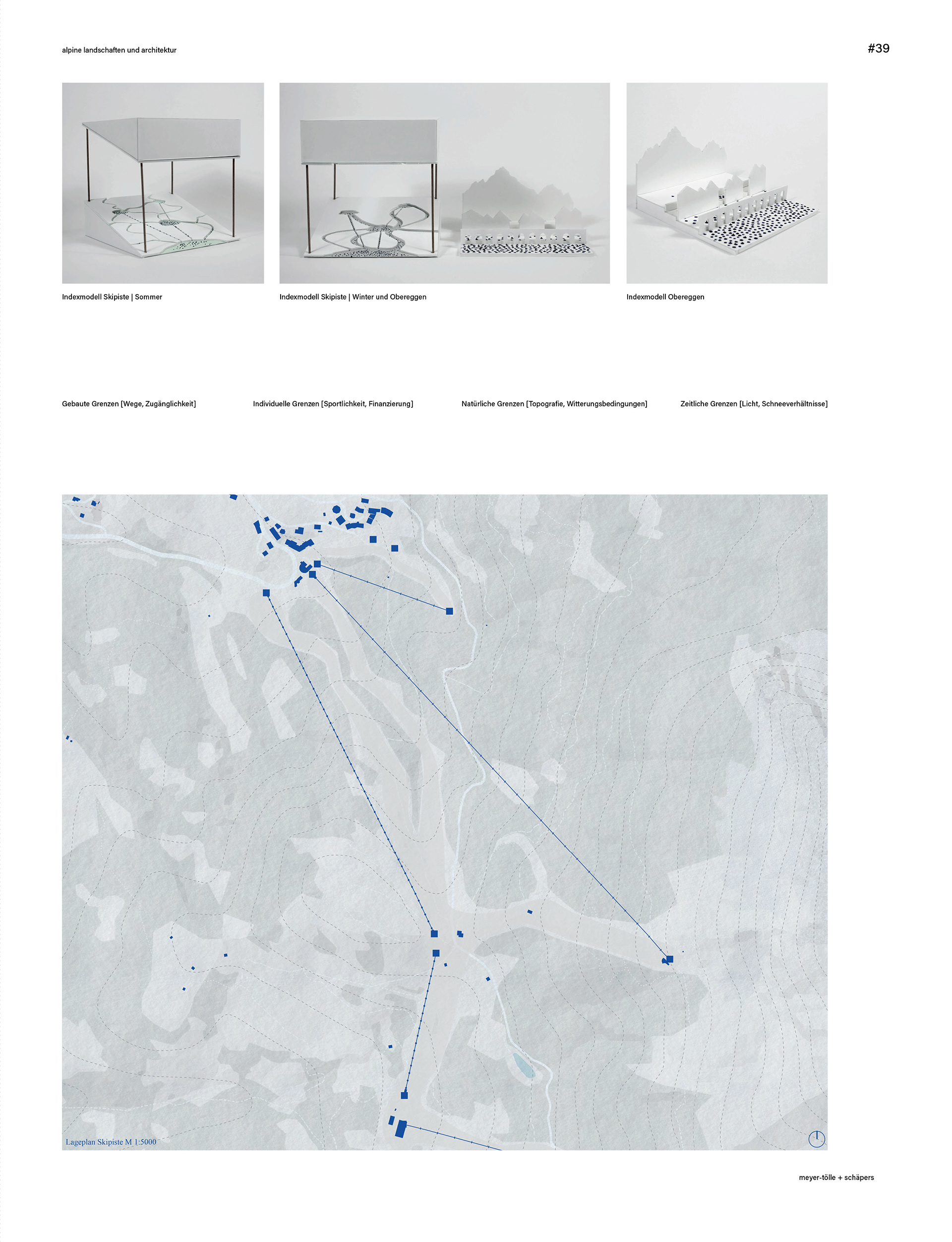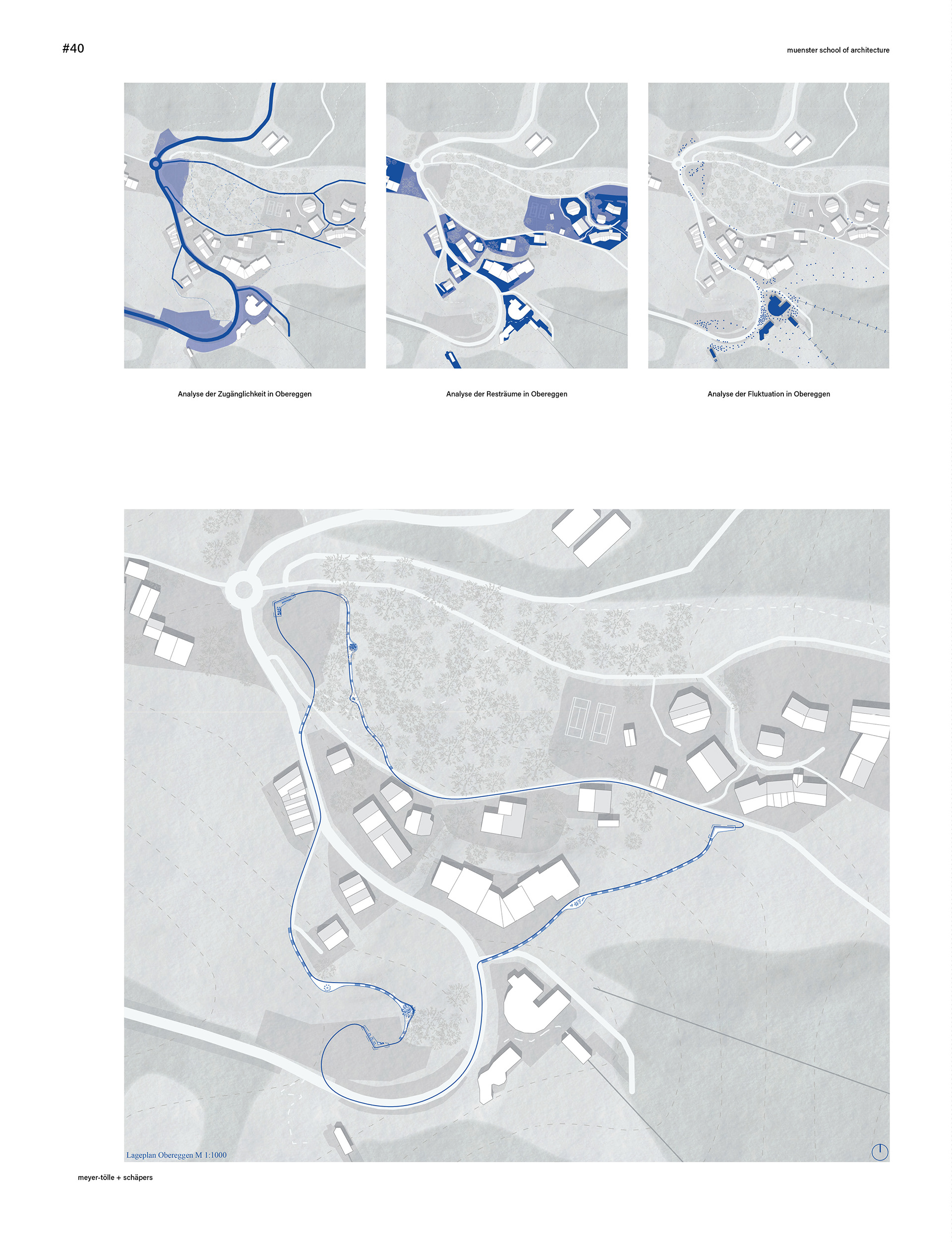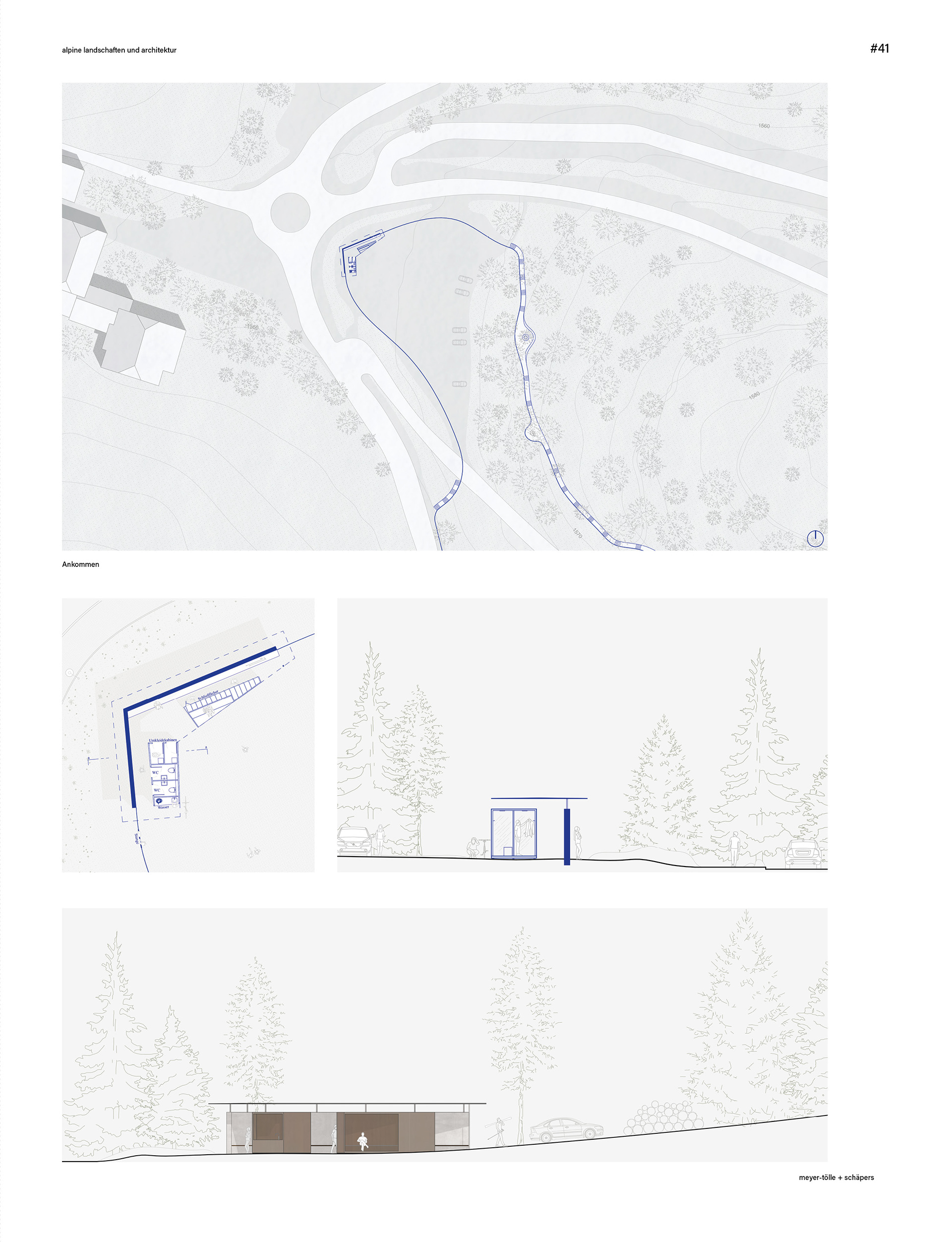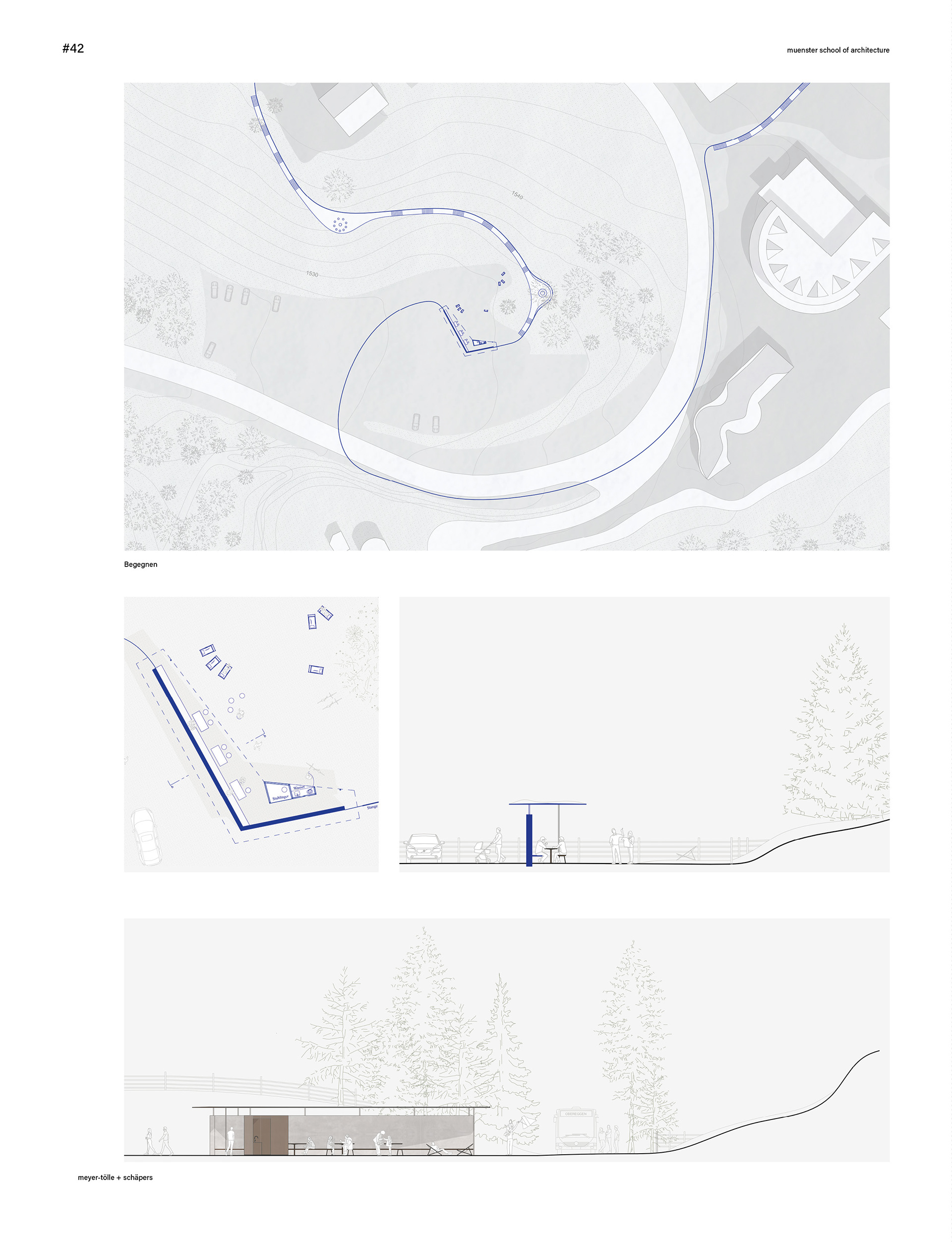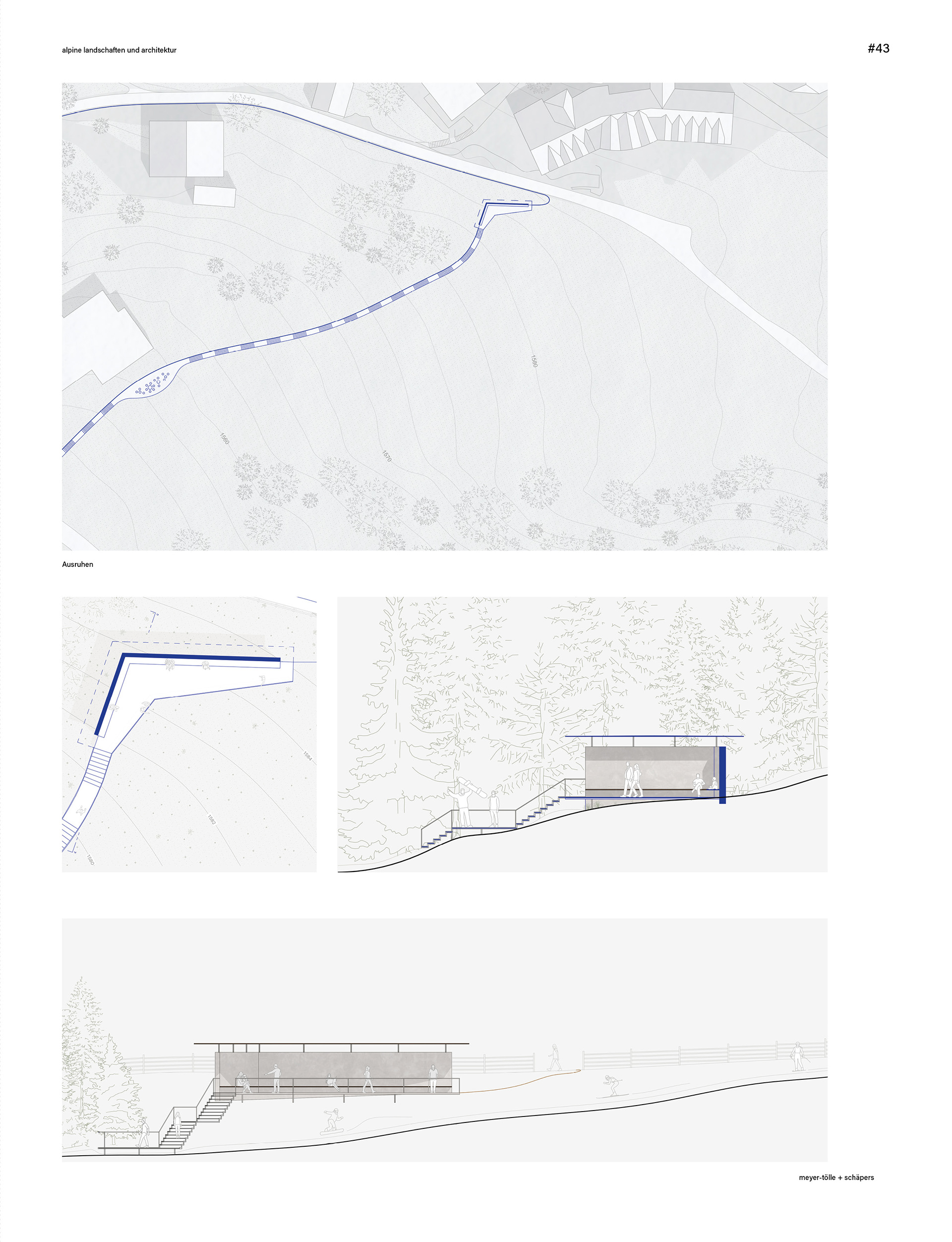ALPINE LANDSCAPES AND ARCHITECTURE
WINTER SEMESTER 2023/24
MUENSTER SCHOOL OF ARCHITECTURE
UNIVERSITY OF APPLIED SCIENCES MUENSTER
JULIAN HEINEN + VALENTINA LUCICH
In this master course, the phenomenon of alpine landscapes and their interaction with the built environment was examined. The landscape in the Alps had changed significantly in the preceding decades due to mass tourism during the winter season. This high demand had led to many natural areas resembling complex infrastructures composed of ski slopes, lifts, and snow cannons. However, this also necessitated a reevaluation of the traditional concept of nature in the Alps. Alpine landscapes were practically curated, thereby acquiring an artificial aspect. This interpretation of the Alps was particularly influenced by the world-renowned photographer Walter Niedermayer, who contrasted nature and infrastructure in his works in a striking manner. Essentially, there was no longer any difference between the infrastructure of a highly technologized ski slope and a building. Nature was practically evolved into an infrastructure that operated through architectural interventions. The basis of the design was the exemplary analysis of the ski slope in Obereggen, which was representative of alpine landscapes. Specifically, existing spatial thresholds between nature, infrastructure, and architecture were identified through subjective model studies and translated into design principles. On this basis, the village center was addressed. In contrast to the ski slope, which was characterized by very high accessibility, the village center was fragmented. Each guesthouse and hotel formed self-contained islands with their respective amenities such as wellness areas, restaurants, and gyms. Expansion led to increasingly larger building complexes and posed the risk of a scaleless hotel fortress that did not fit the local scenery. Intensive work was done with models as representational objects, helping to abstract situations and describe them individually from a very personal perspective. With this methodology, contributions were made to the current debate on mass tourism in the Alps and the stance was introduced into the discussion. Visits were also made to Walter Niedermayr in his studio, a lecture on mass tourism by the responsible council member Stefano Fattor was attended, and built architecture that had emerged in this context was visited.
MUENSTER SCHOOL OF ARCHITECTURE
UNIVERSITY OF APPLIED SCIENCES MUENSTER
JULIAN HEINEN + VALENTINA LUCICH
In this master course, the phenomenon of alpine landscapes and their interaction with the built environment was examined. The landscape in the Alps had changed significantly in the preceding decades due to mass tourism during the winter season. This high demand had led to many natural areas resembling complex infrastructures composed of ski slopes, lifts, and snow cannons. However, this also necessitated a reevaluation of the traditional concept of nature in the Alps. Alpine landscapes were practically curated, thereby acquiring an artificial aspect. This interpretation of the Alps was particularly influenced by the world-renowned photographer Walter Niedermayer, who contrasted nature and infrastructure in his works in a striking manner. Essentially, there was no longer any difference between the infrastructure of a highly technologized ski slope and a building. Nature was practically evolved into an infrastructure that operated through architectural interventions. The basis of the design was the exemplary analysis of the ski slope in Obereggen, which was representative of alpine landscapes. Specifically, existing spatial thresholds between nature, infrastructure, and architecture were identified through subjective model studies and translated into design principles. On this basis, the village center was addressed. In contrast to the ski slope, which was characterized by very high accessibility, the village center was fragmented. Each guesthouse and hotel formed self-contained islands with their respective amenities such as wellness areas, restaurants, and gyms. Expansion led to increasingly larger building complexes and posed the risk of a scaleless hotel fortress that did not fit the local scenery. Intensive work was done with models as representational objects, helping to abstract situations and describe them individually from a very personal perspective. With this methodology, contributions were made to the current debate on mass tourism in the Alps and the stance was introduced into the discussion. Visits were also made to Walter Niedermayr in his studio, a lecture on mass tourism by the responsible council member Stefano Fattor was attended, and built architecture that had emerged in this context was visited.

